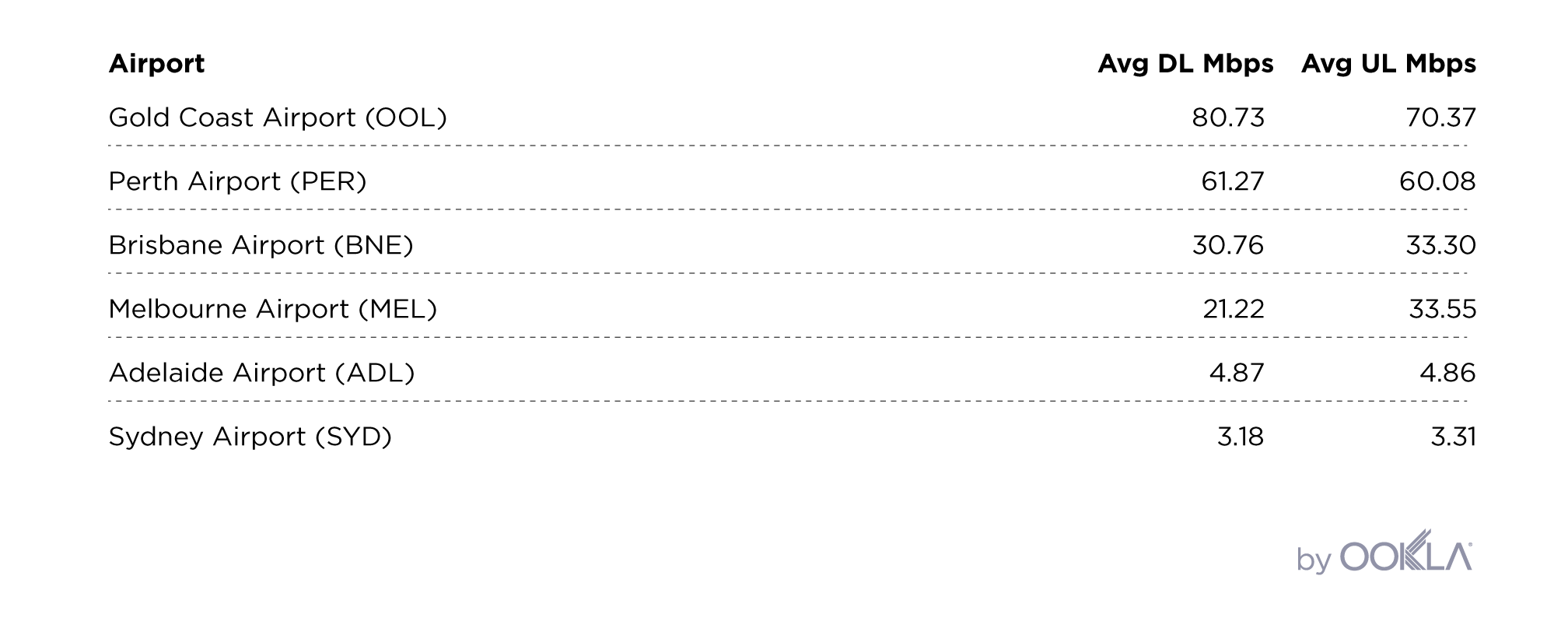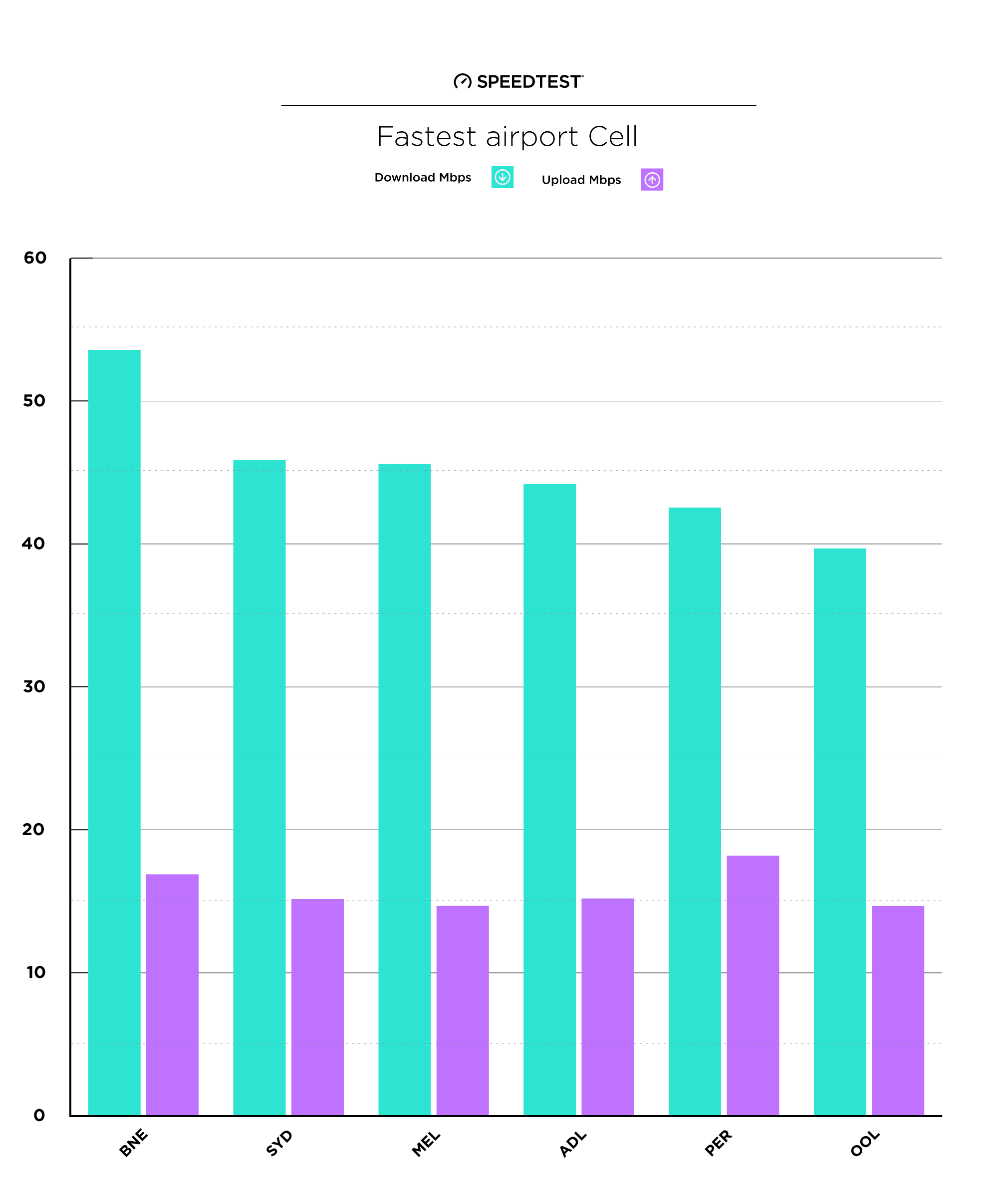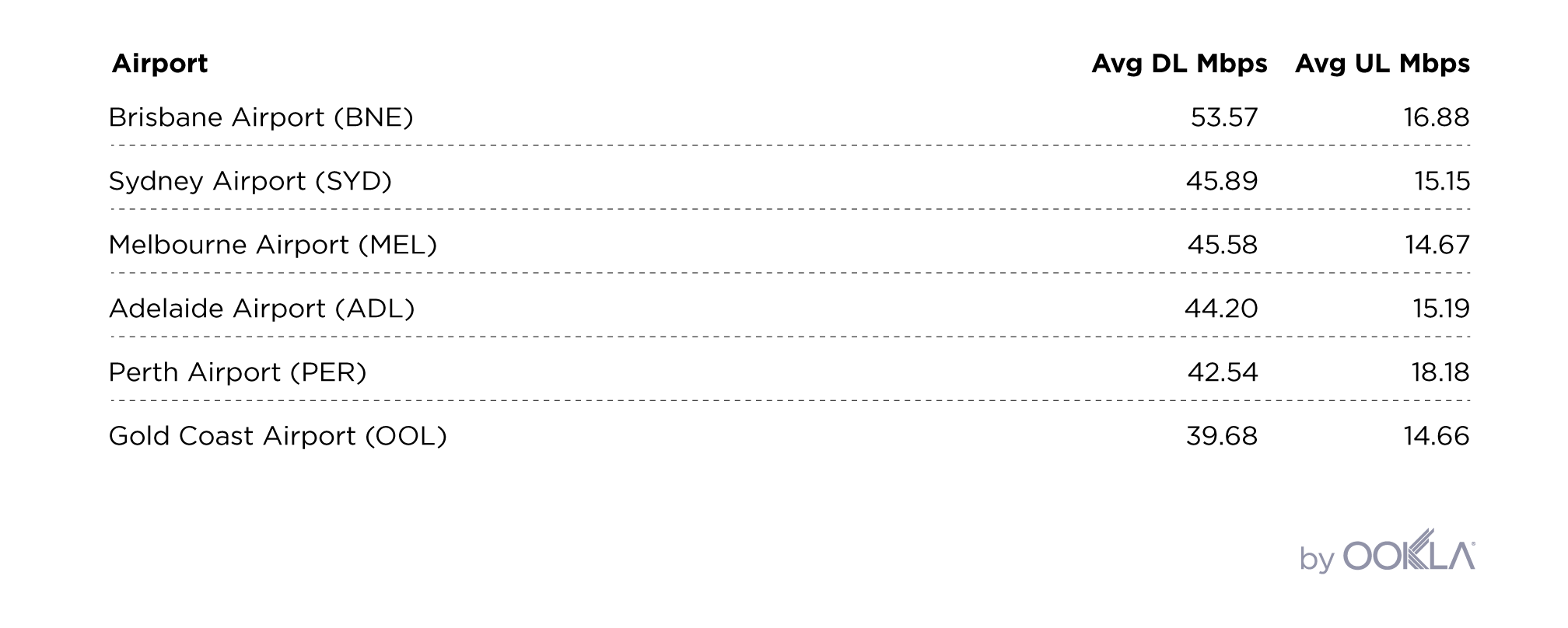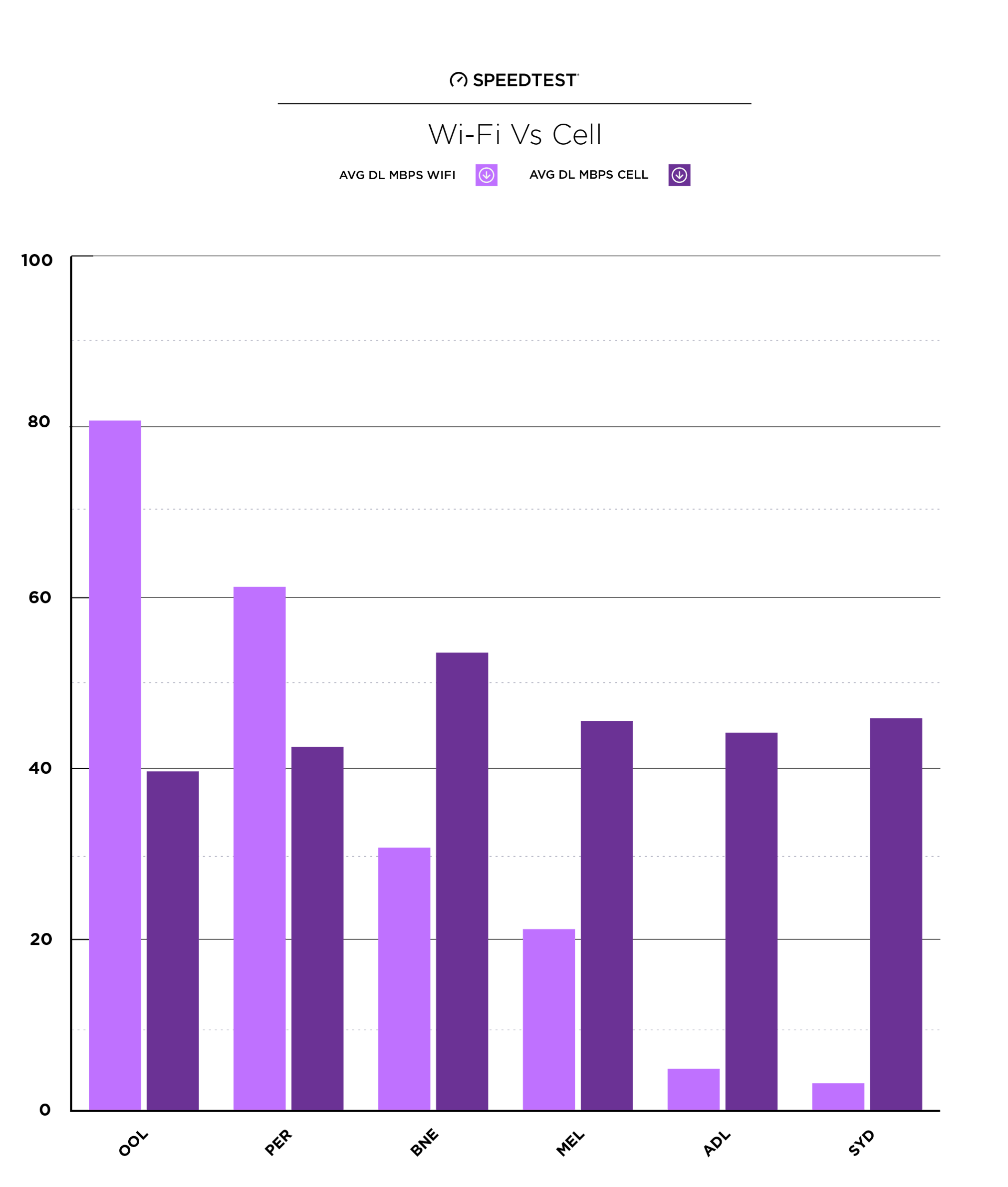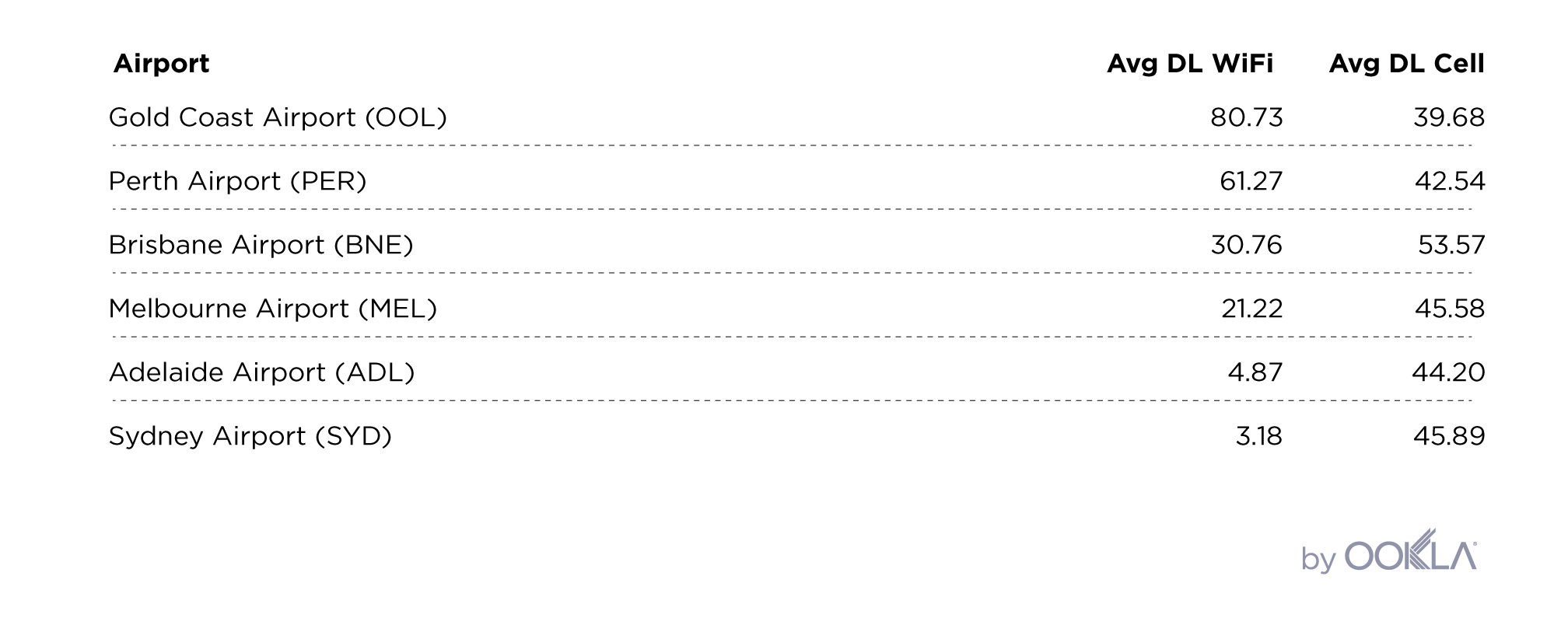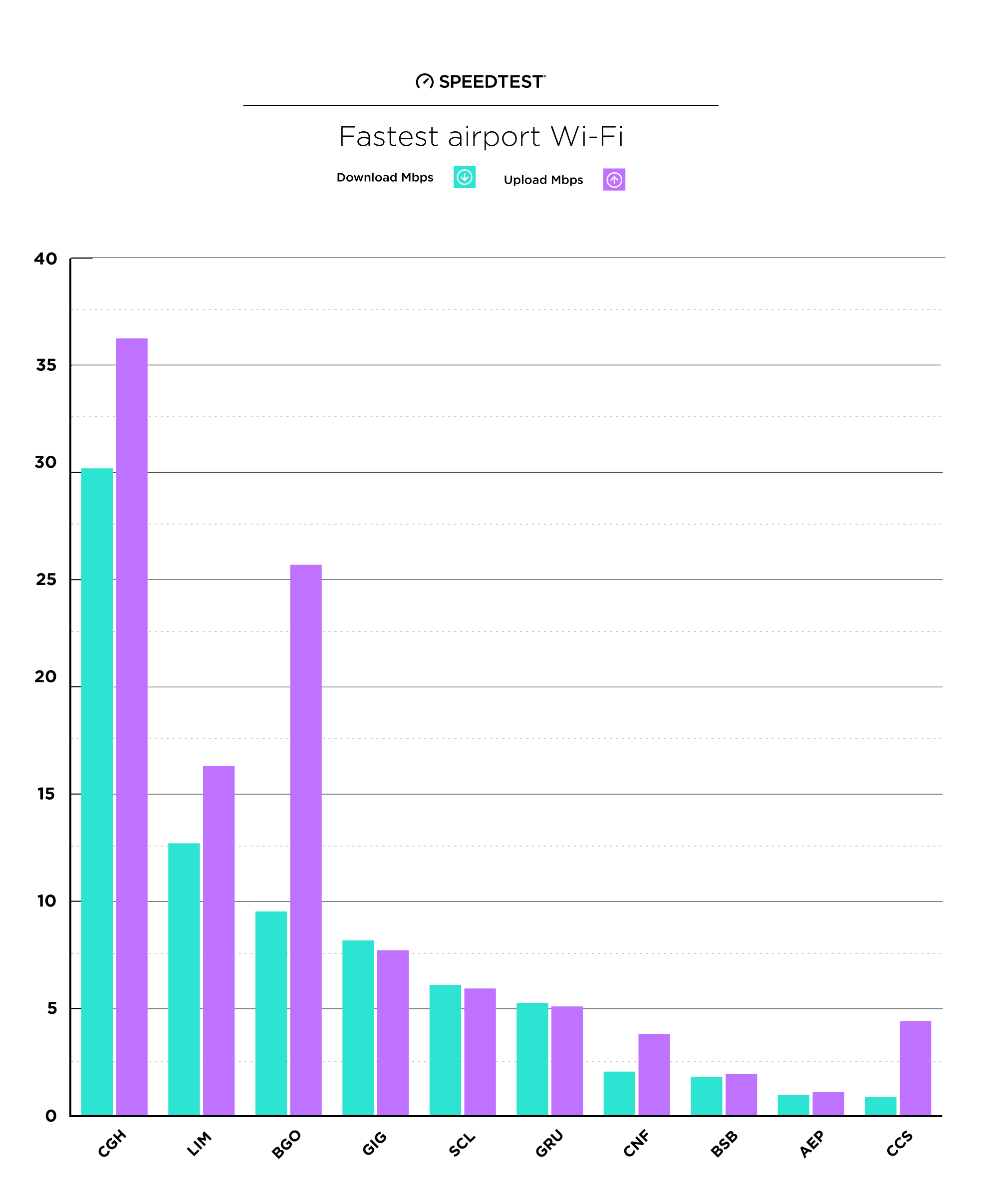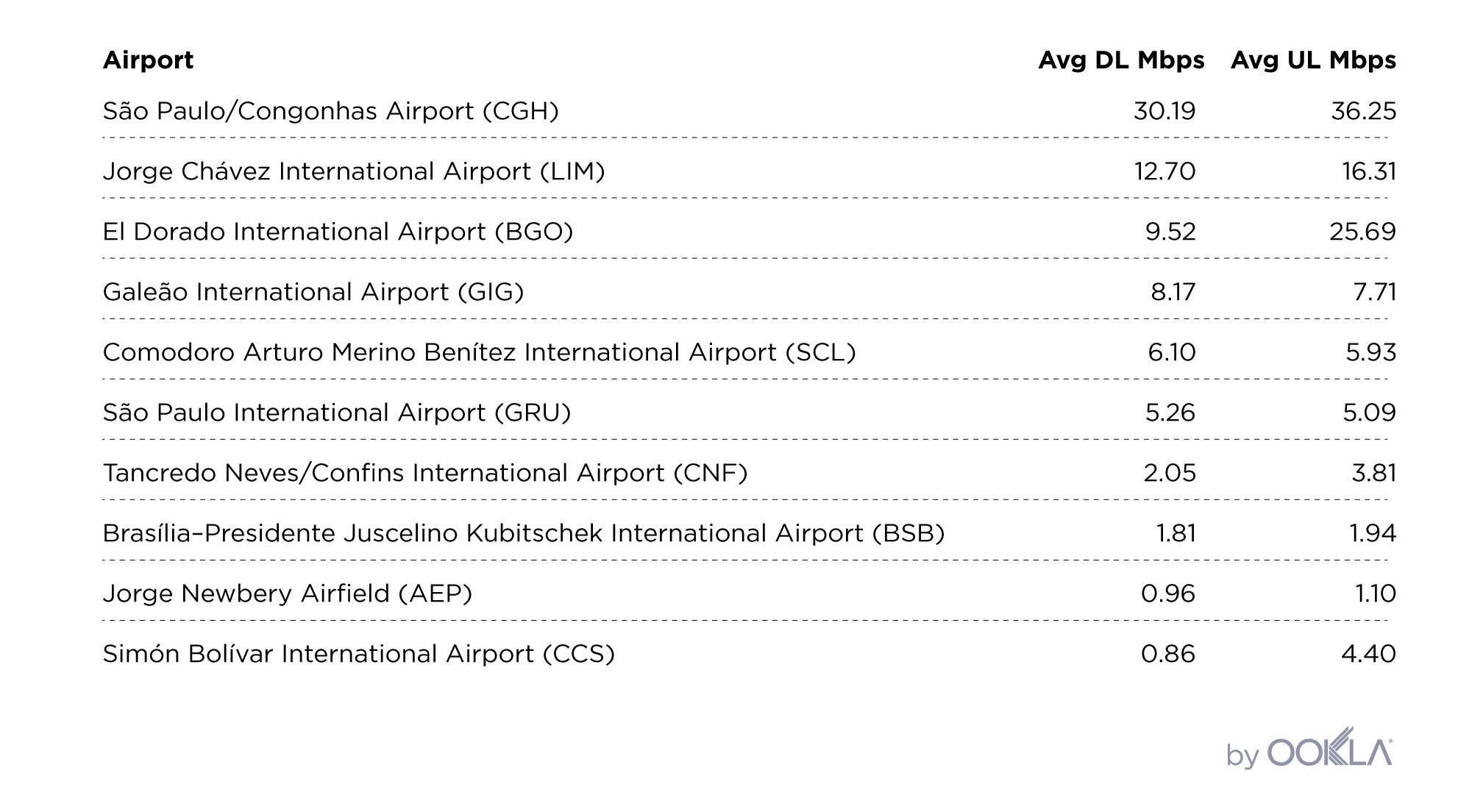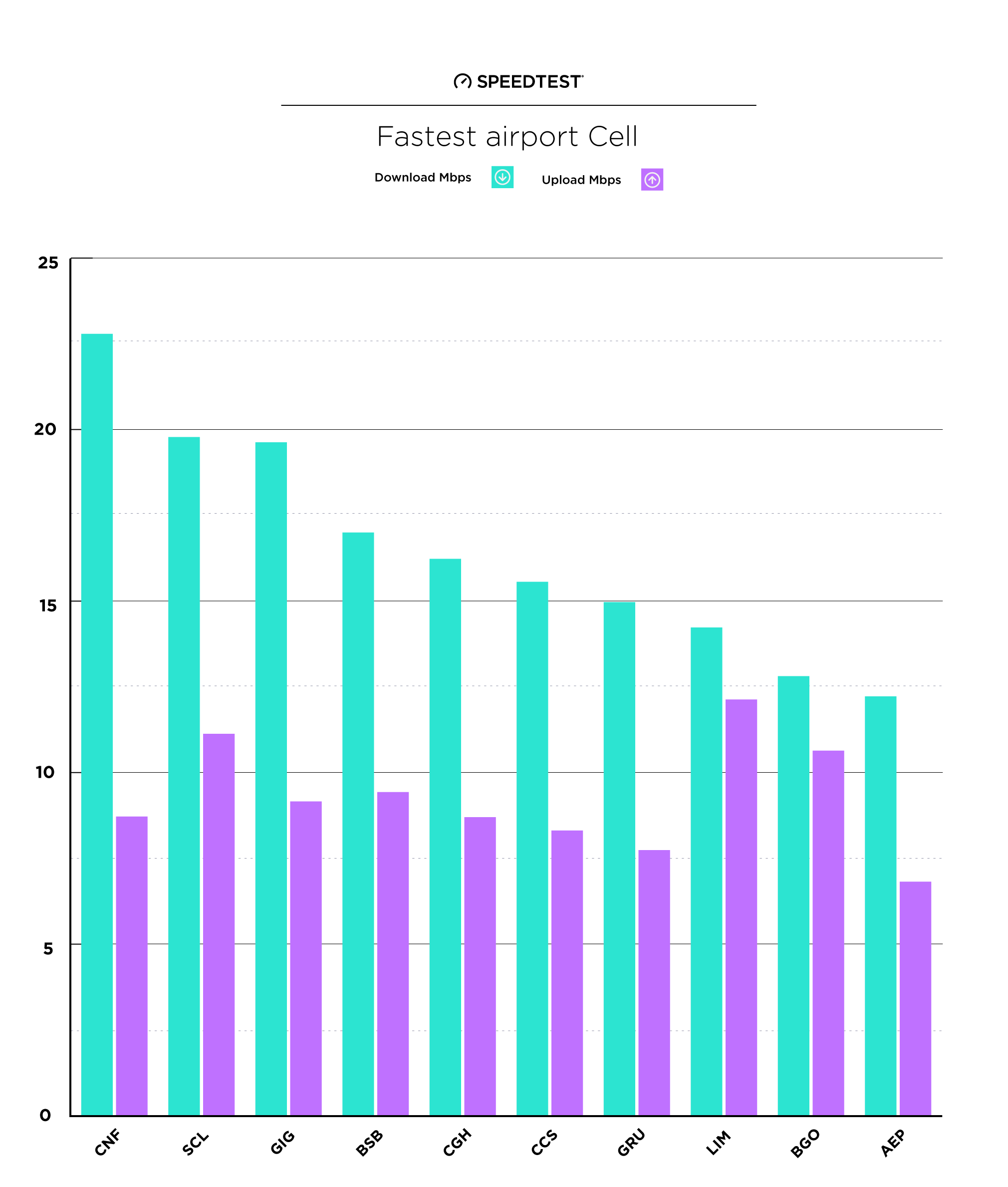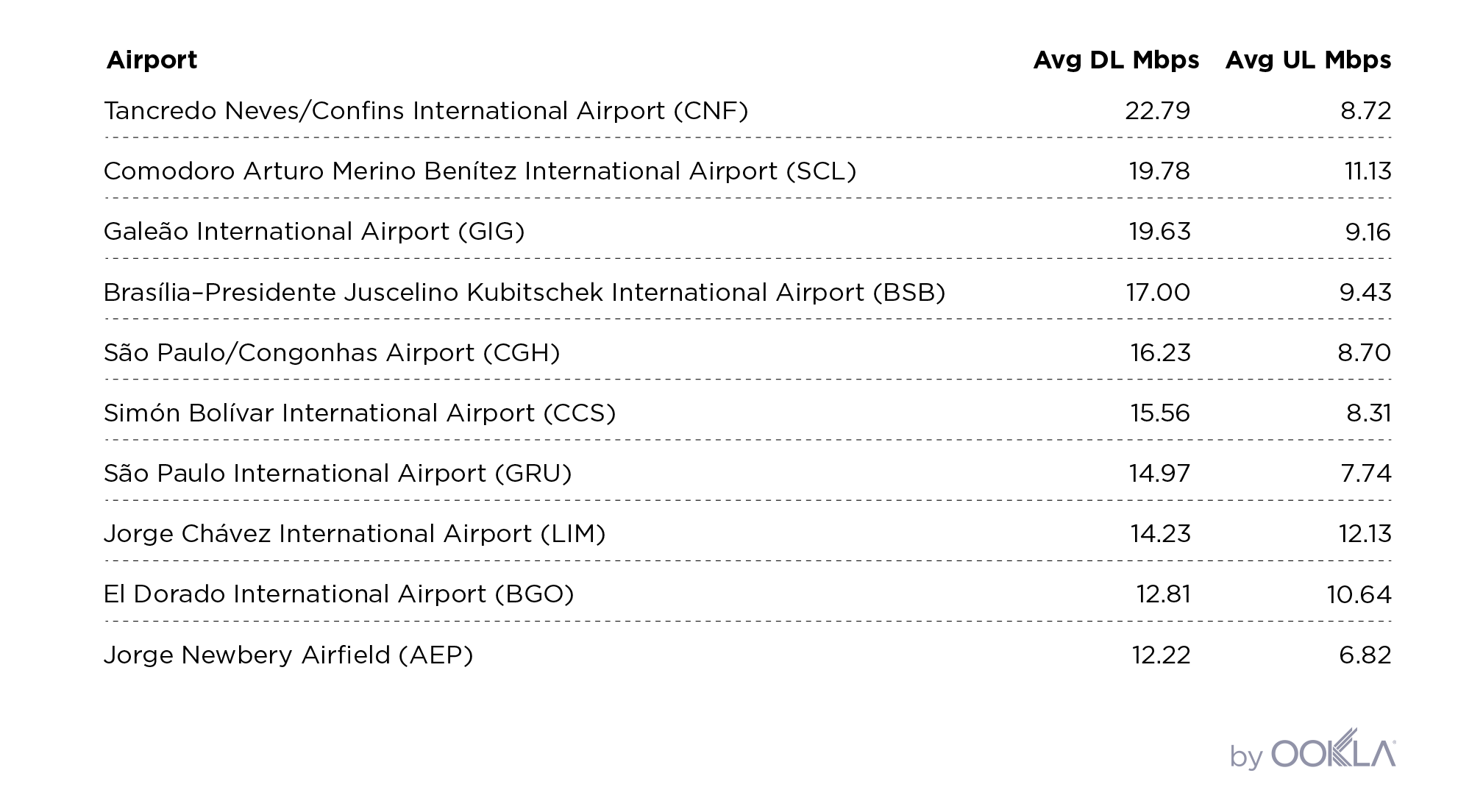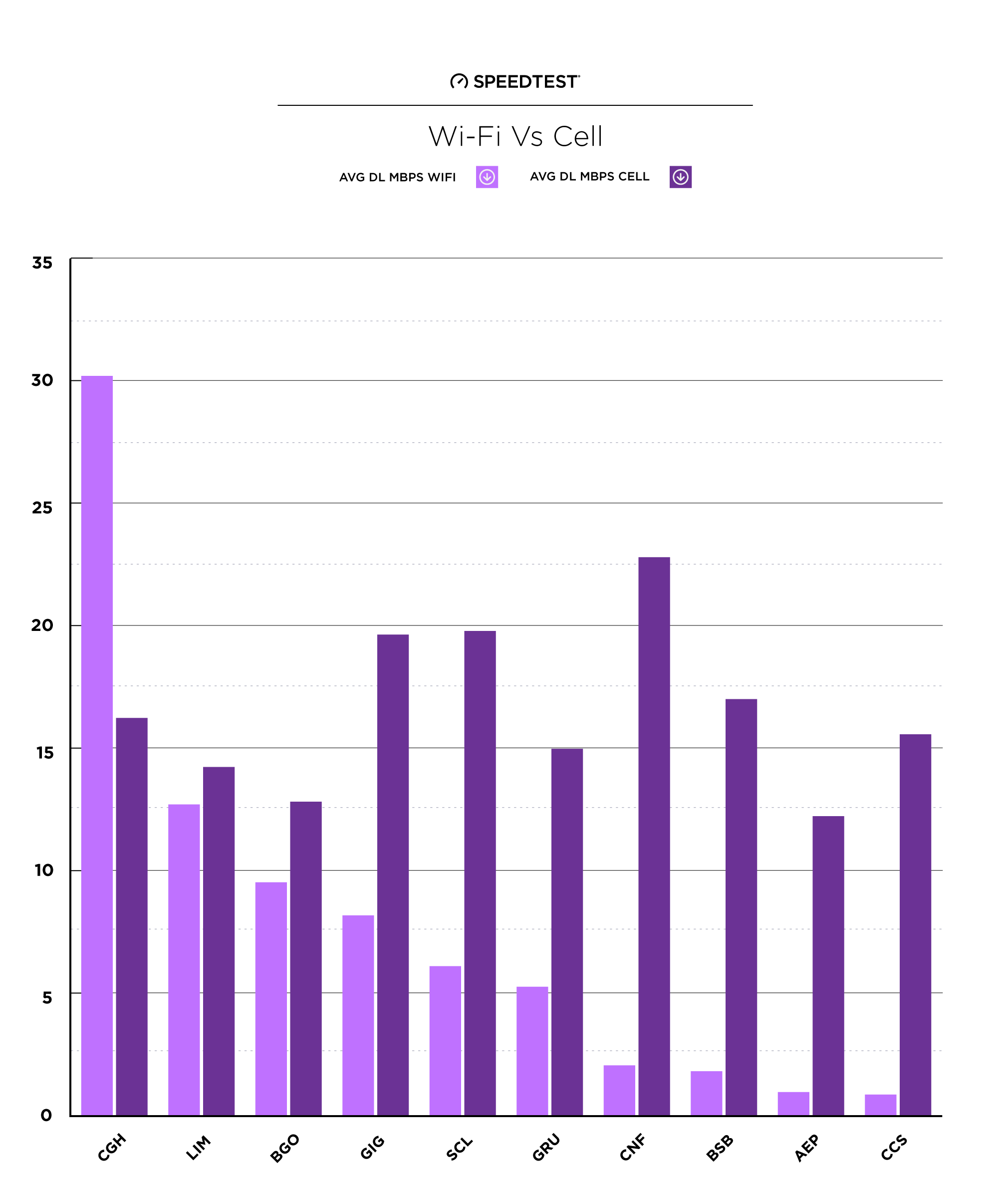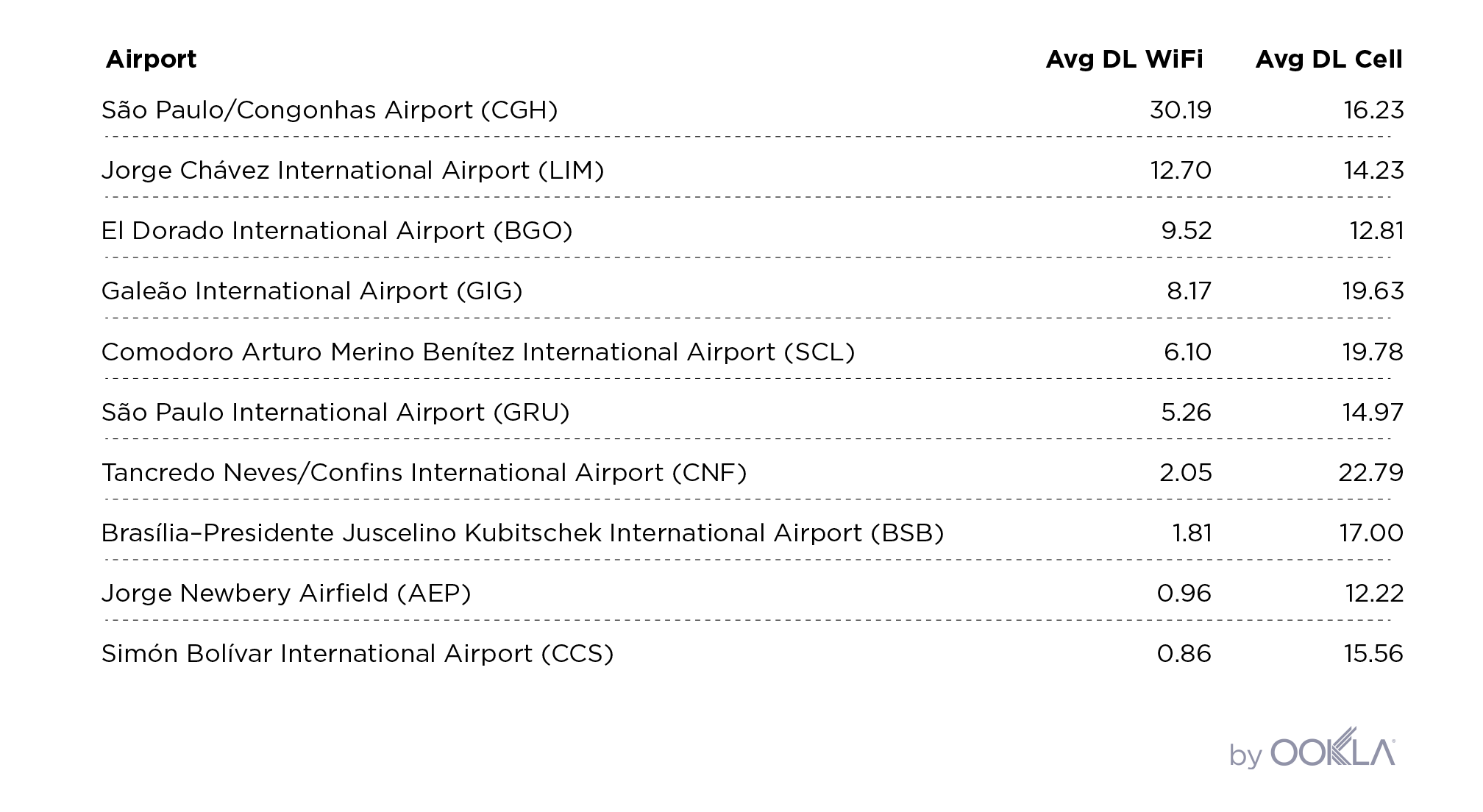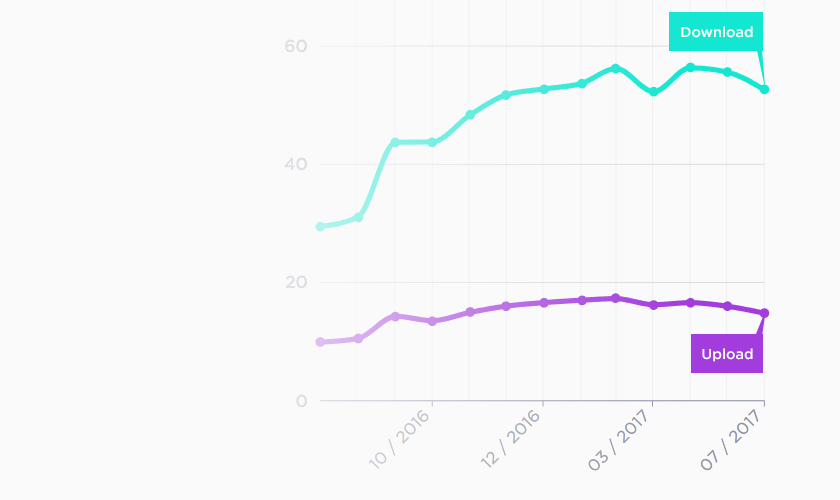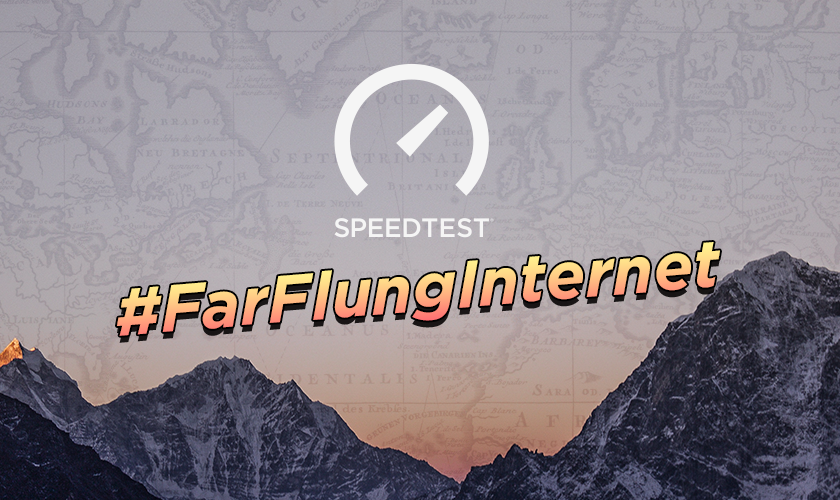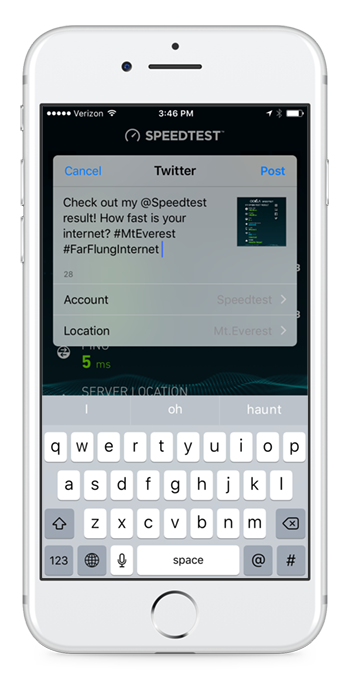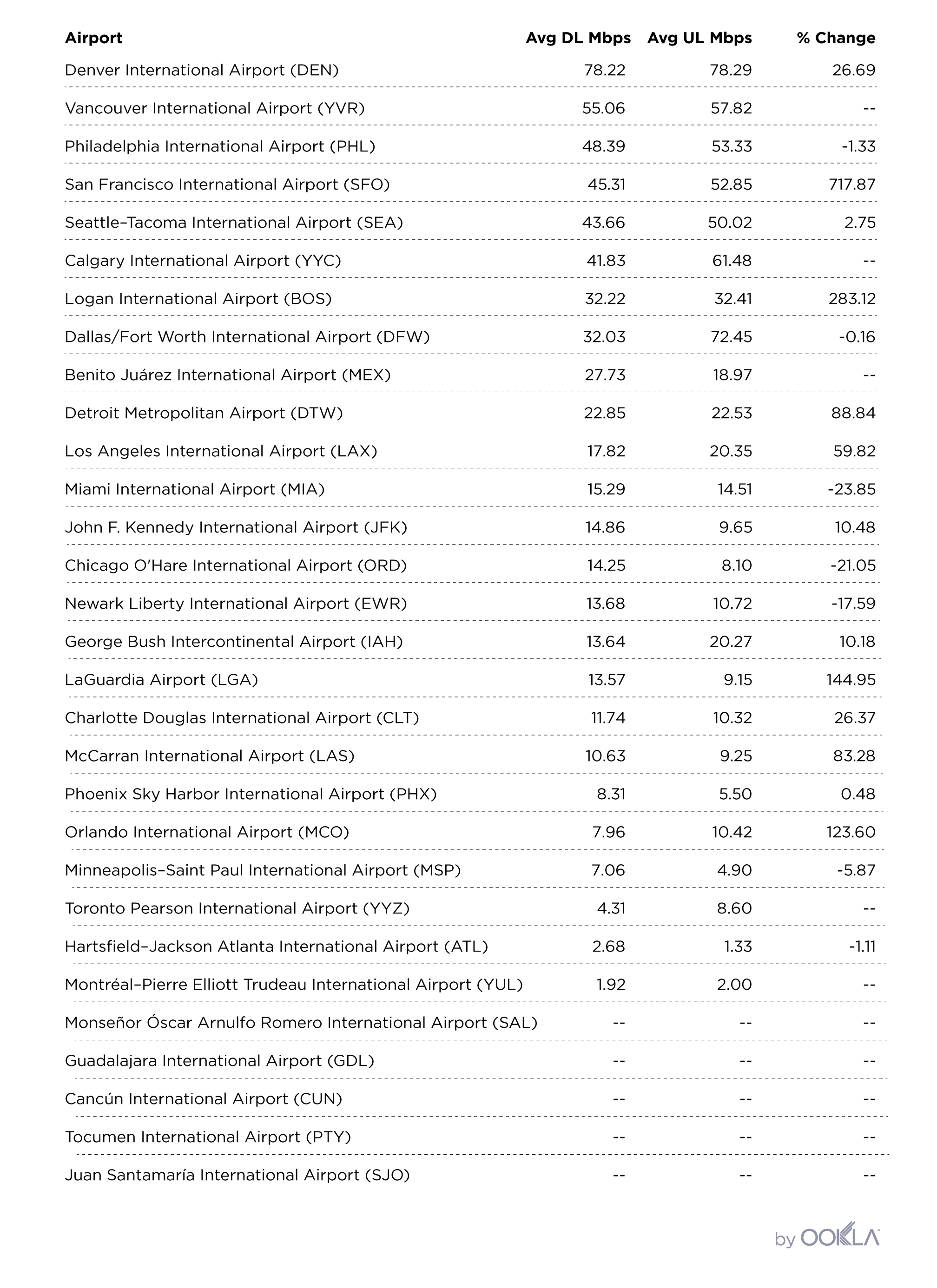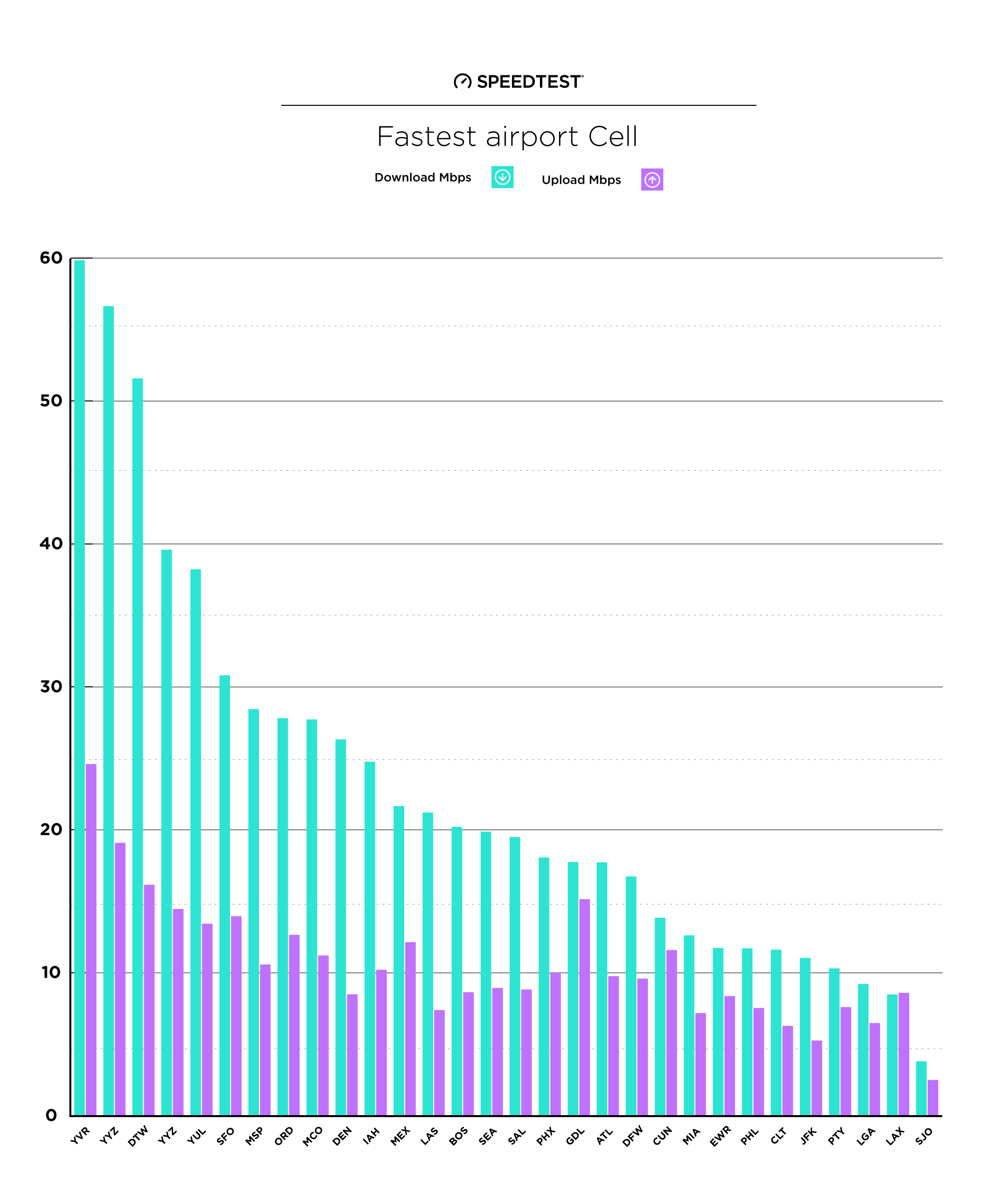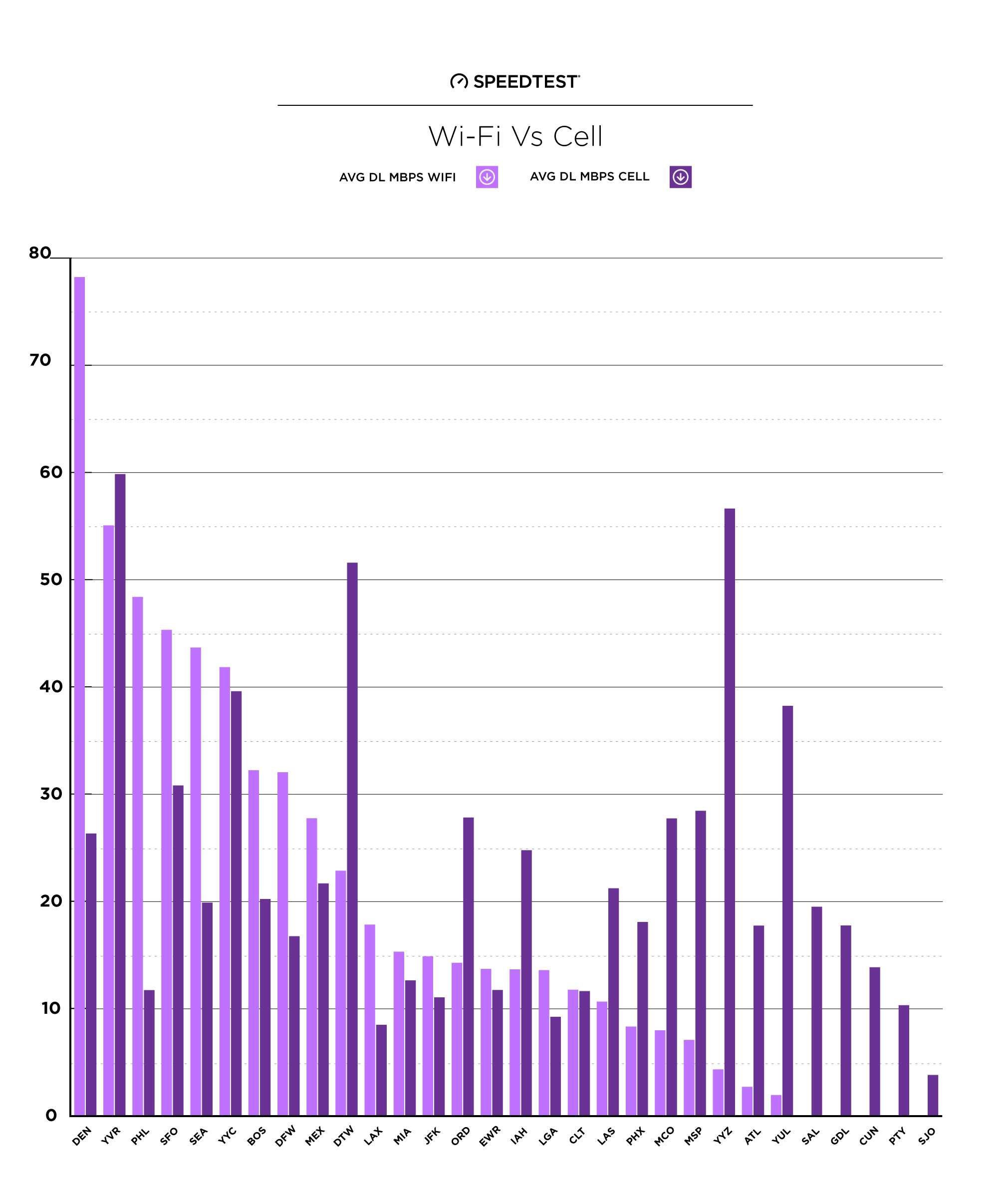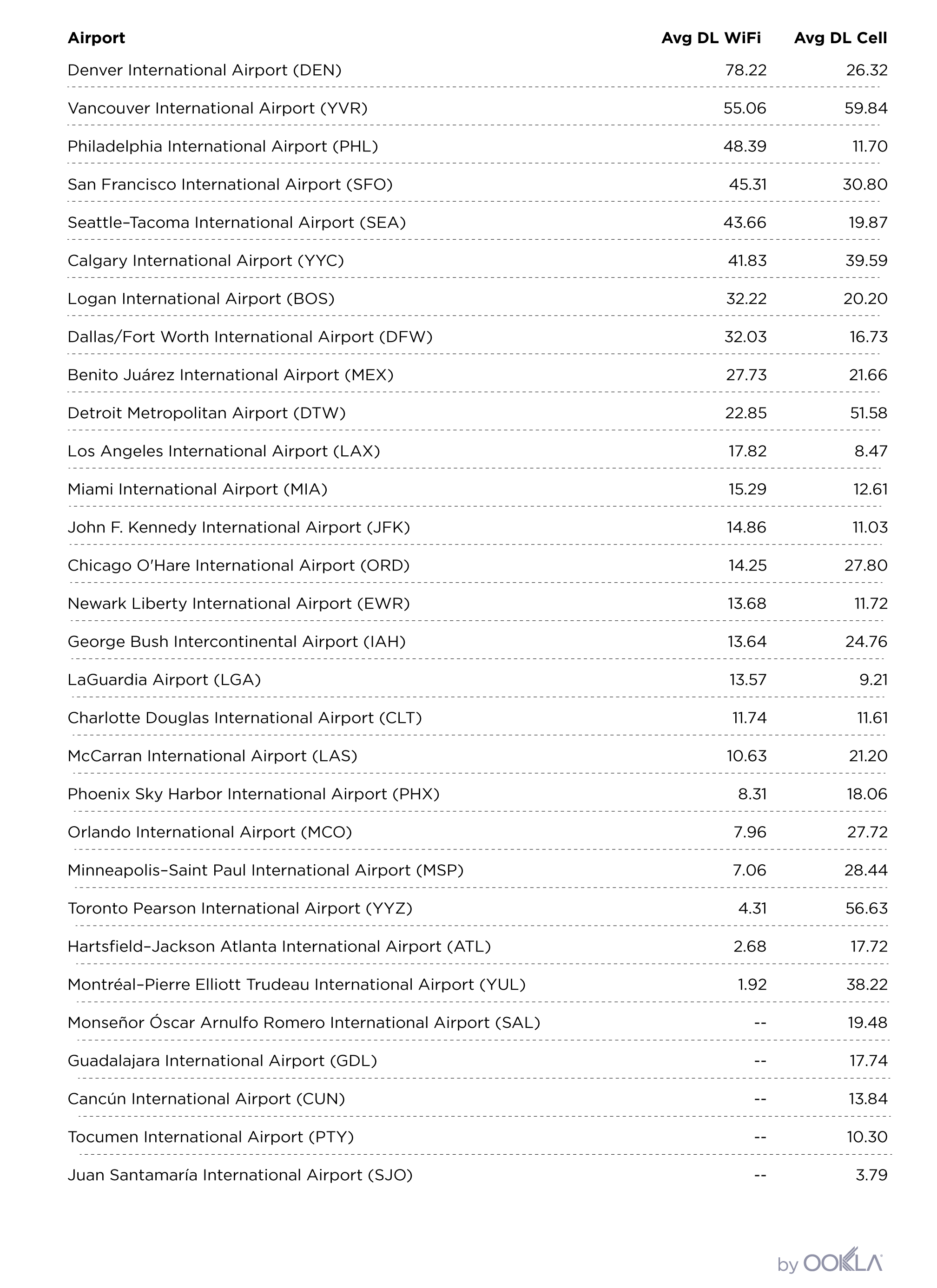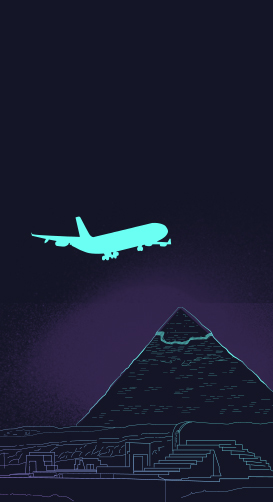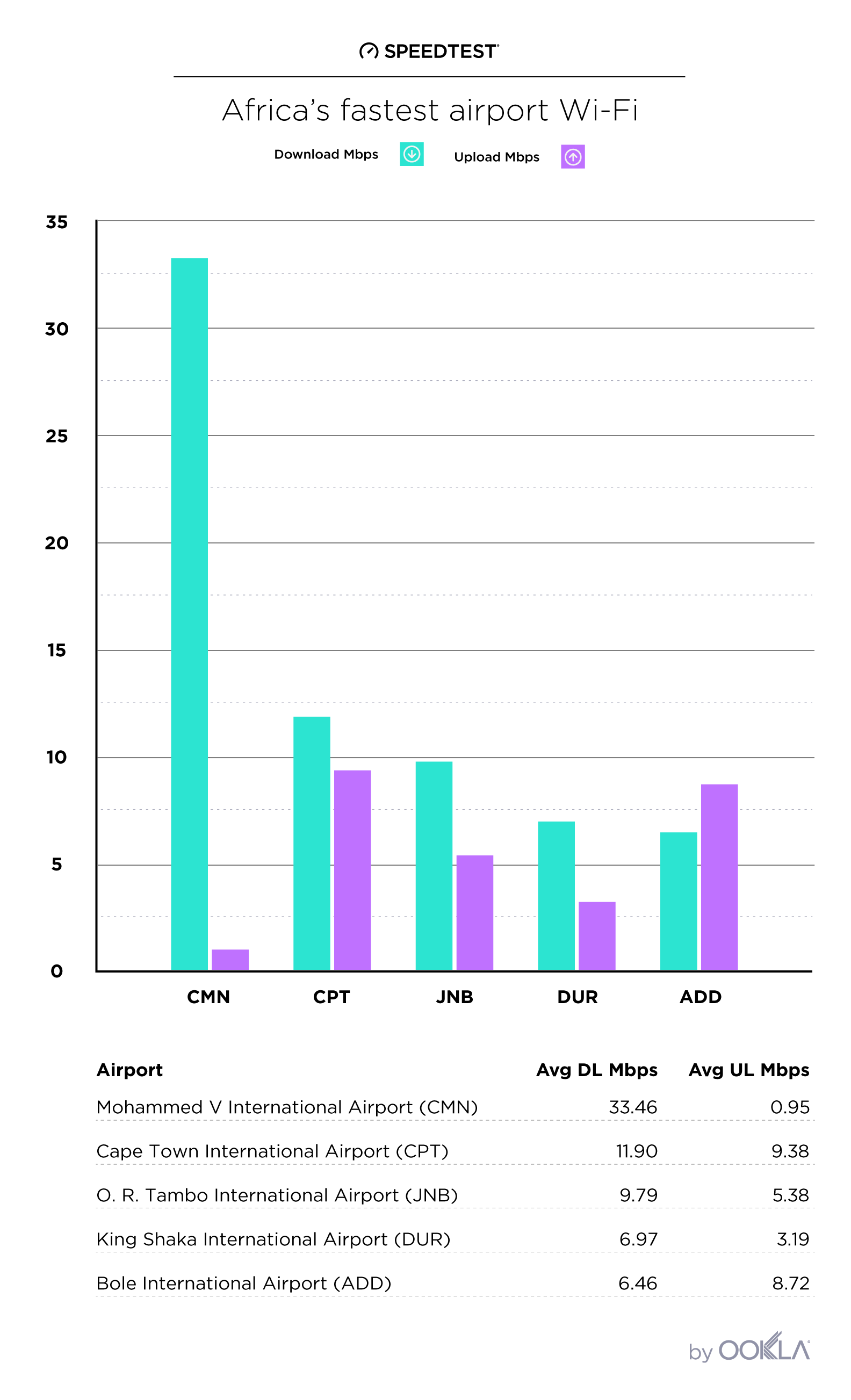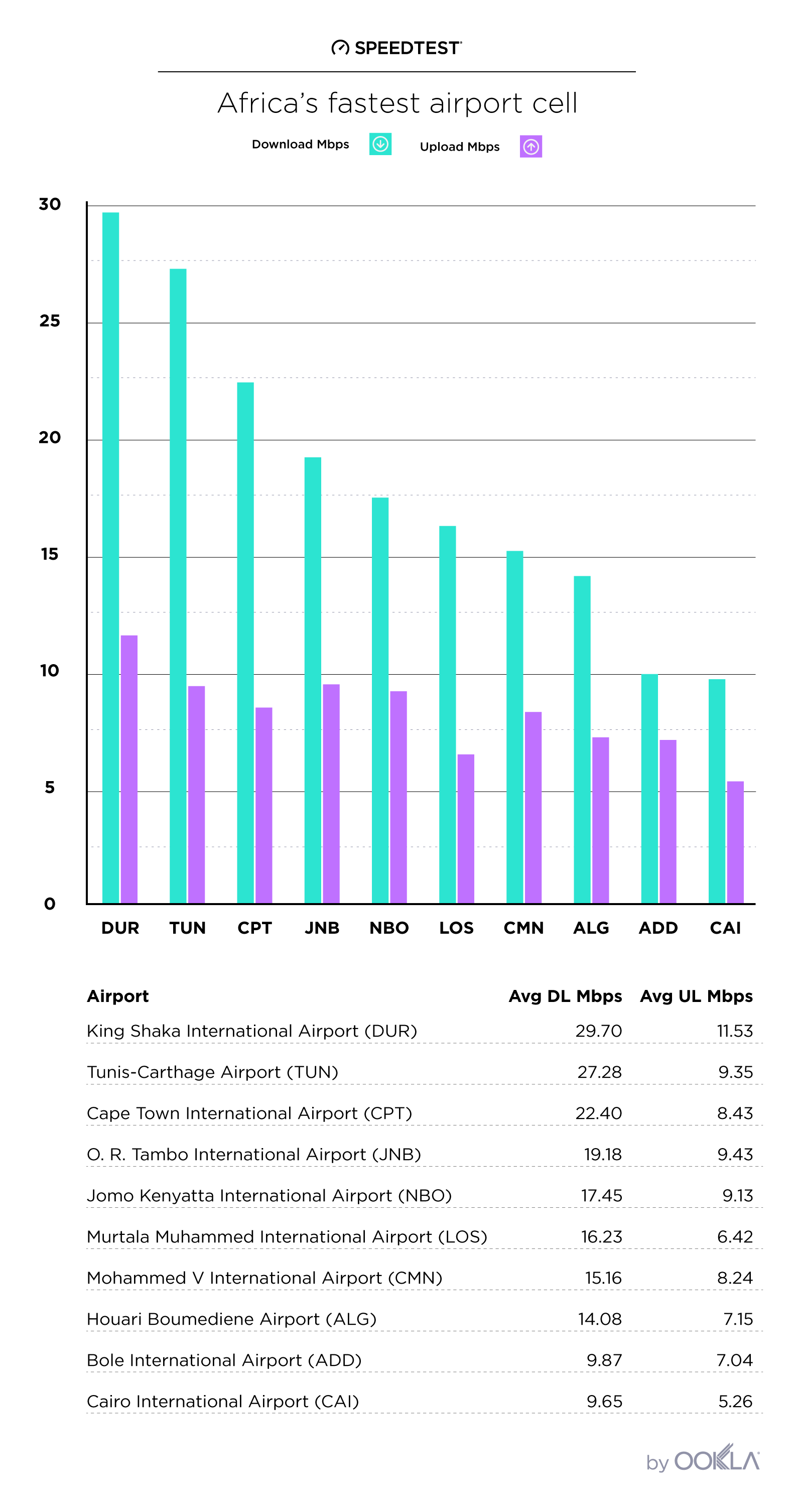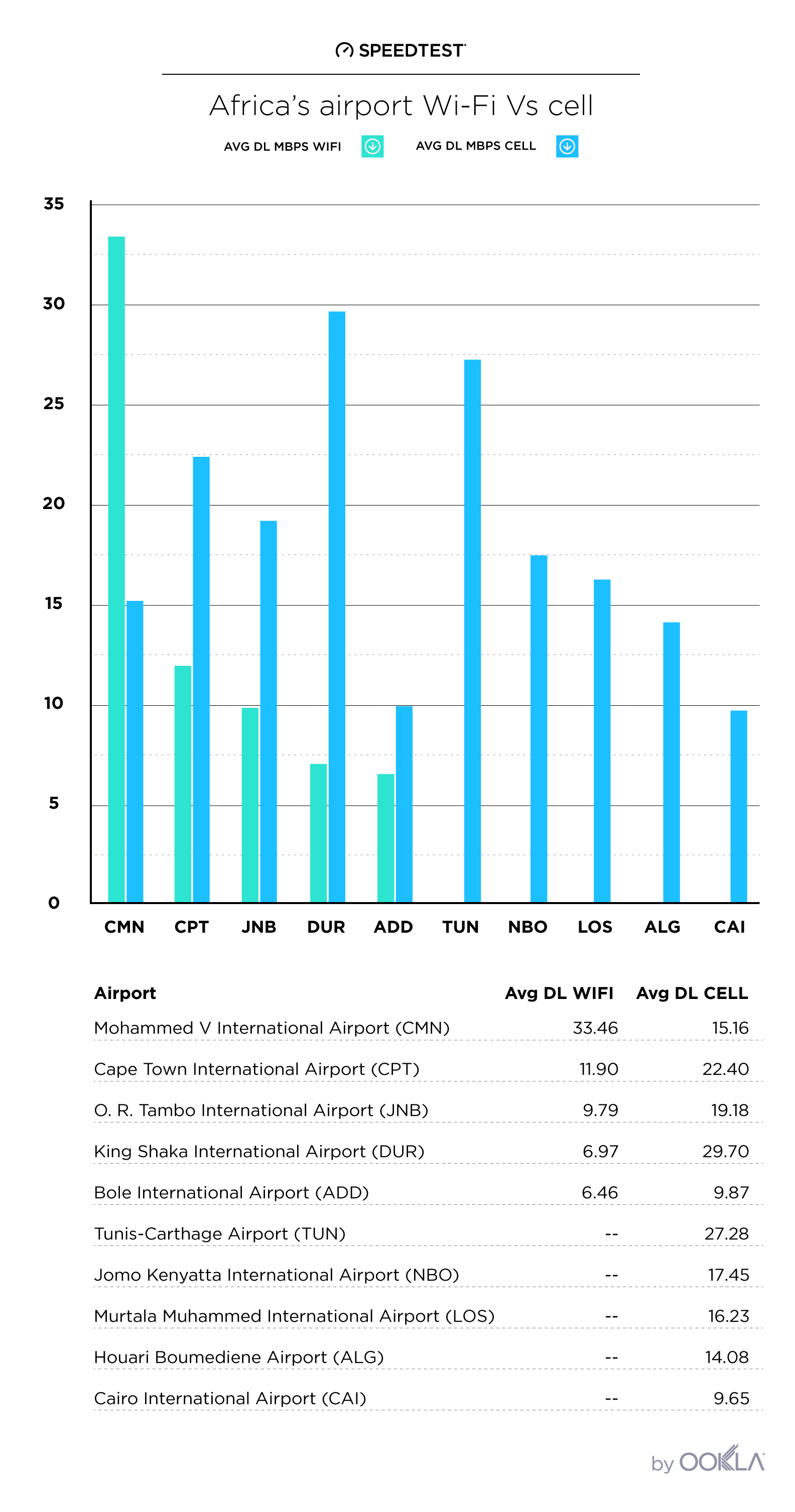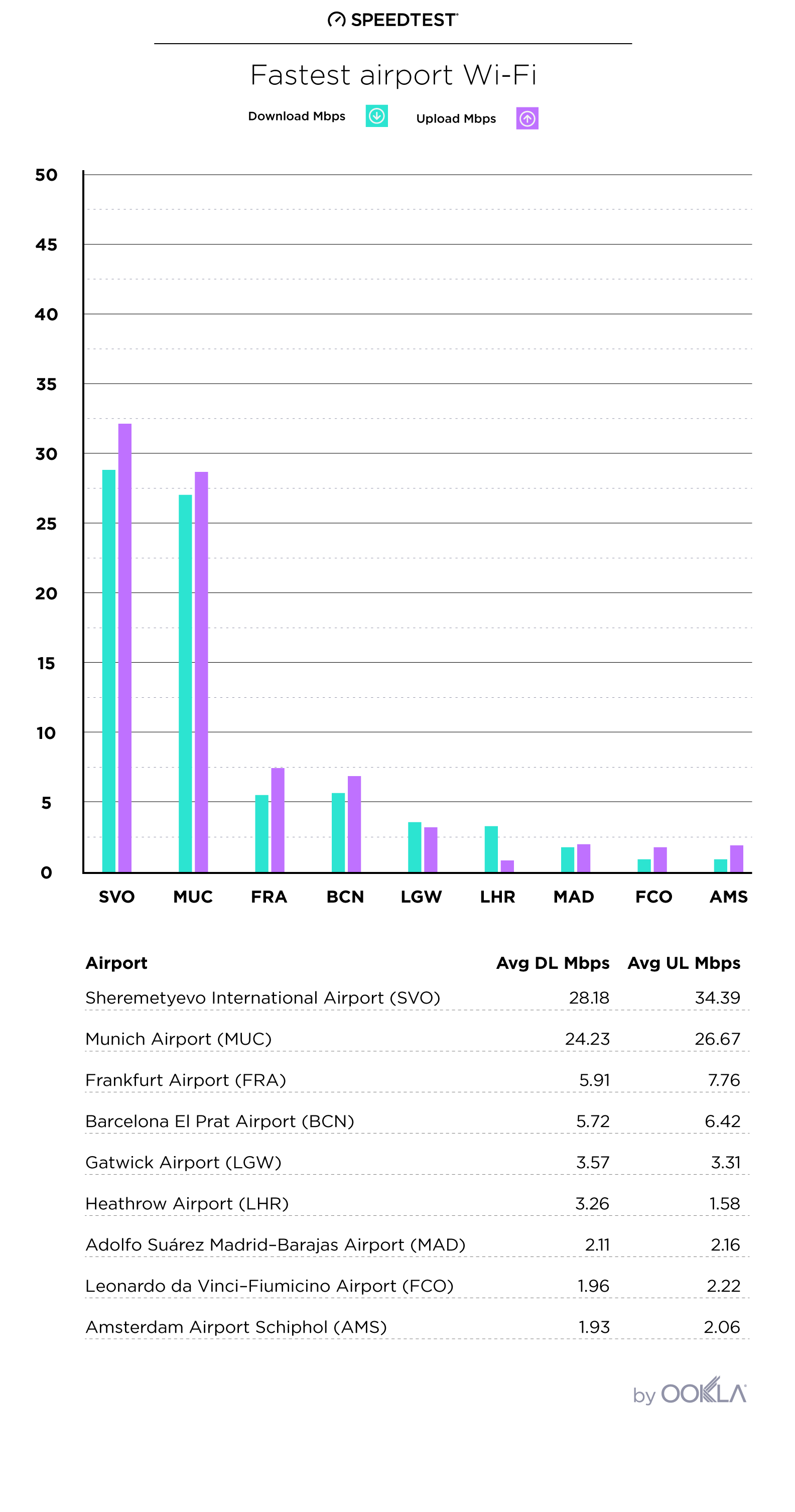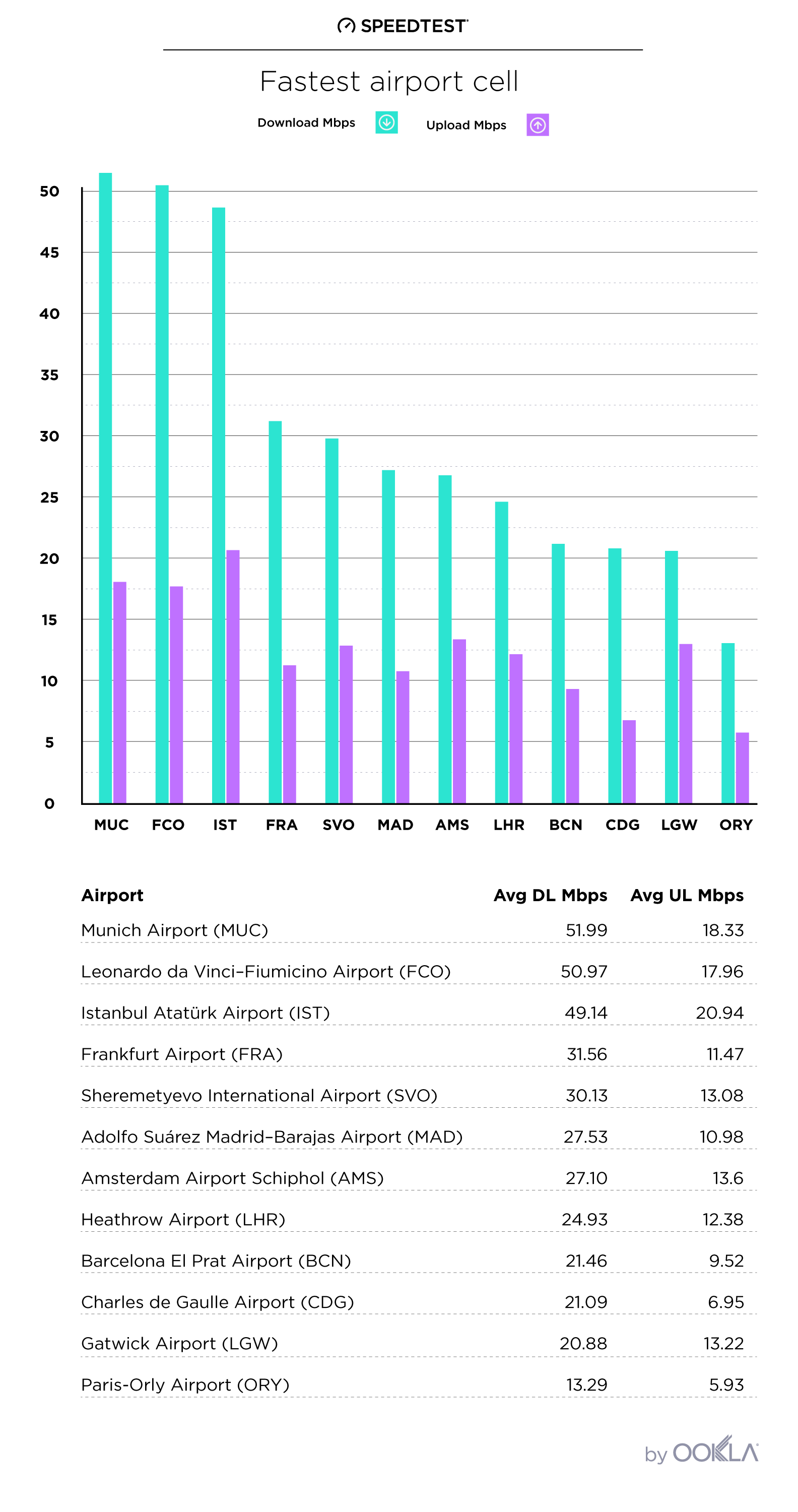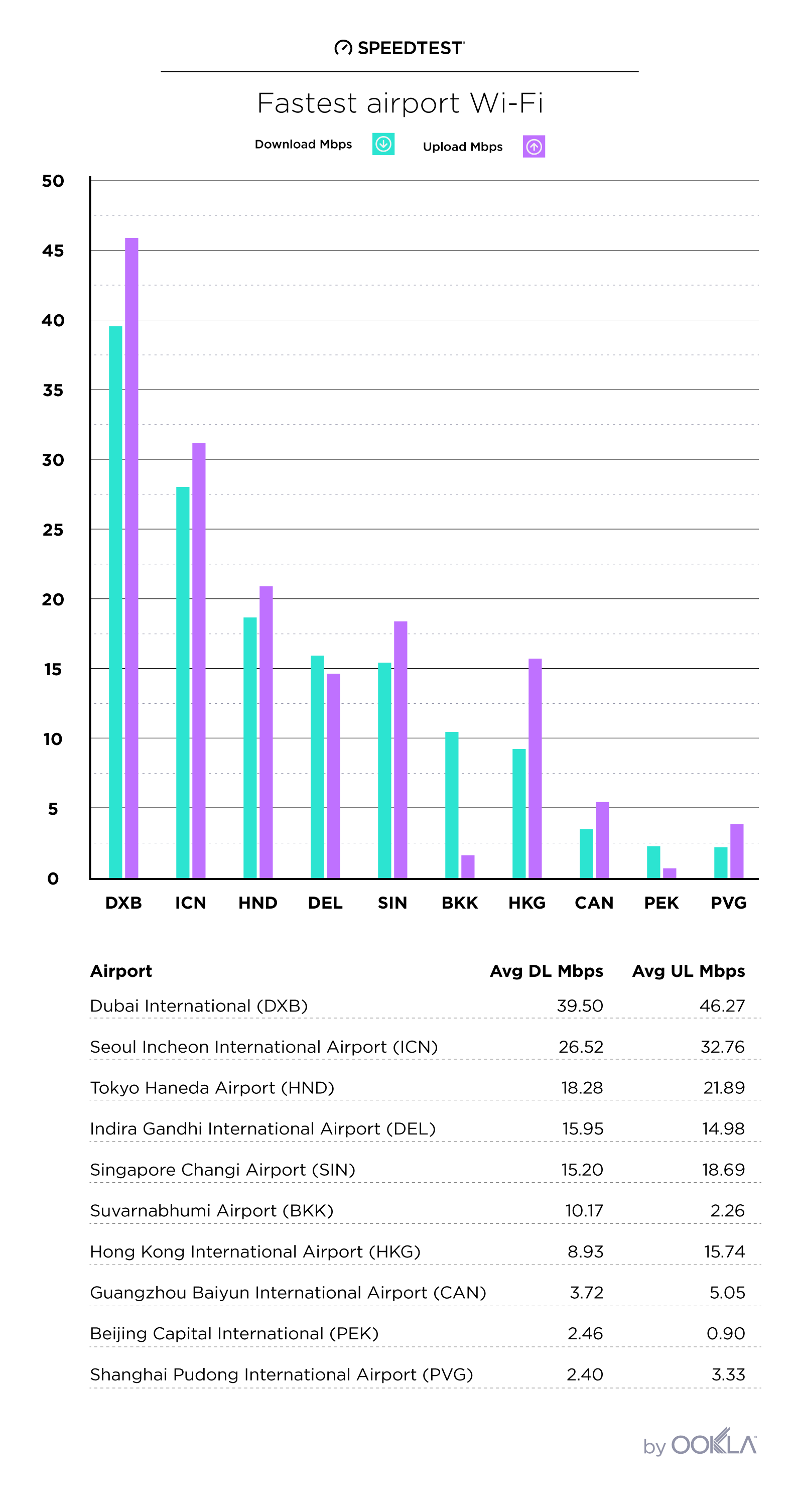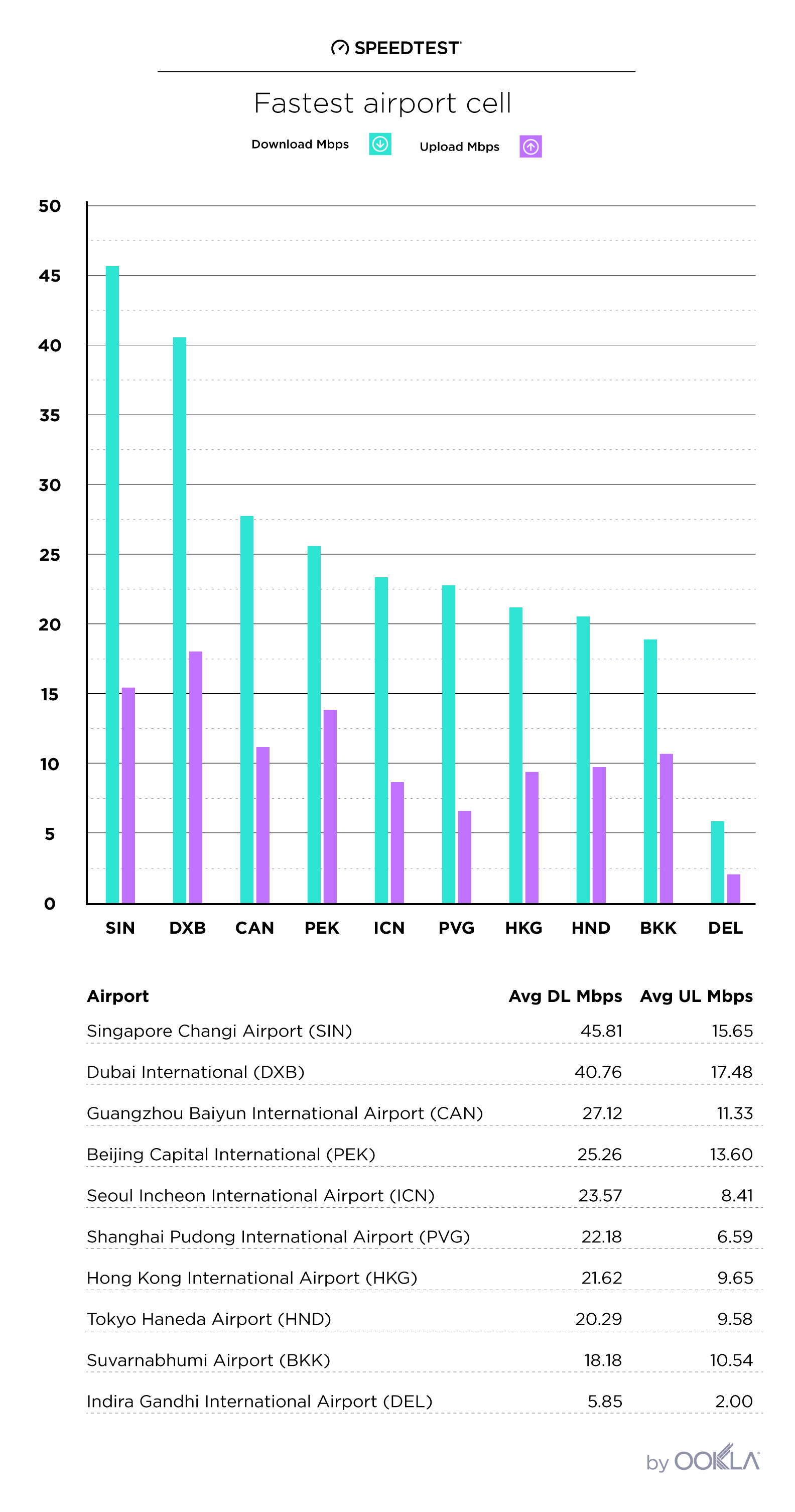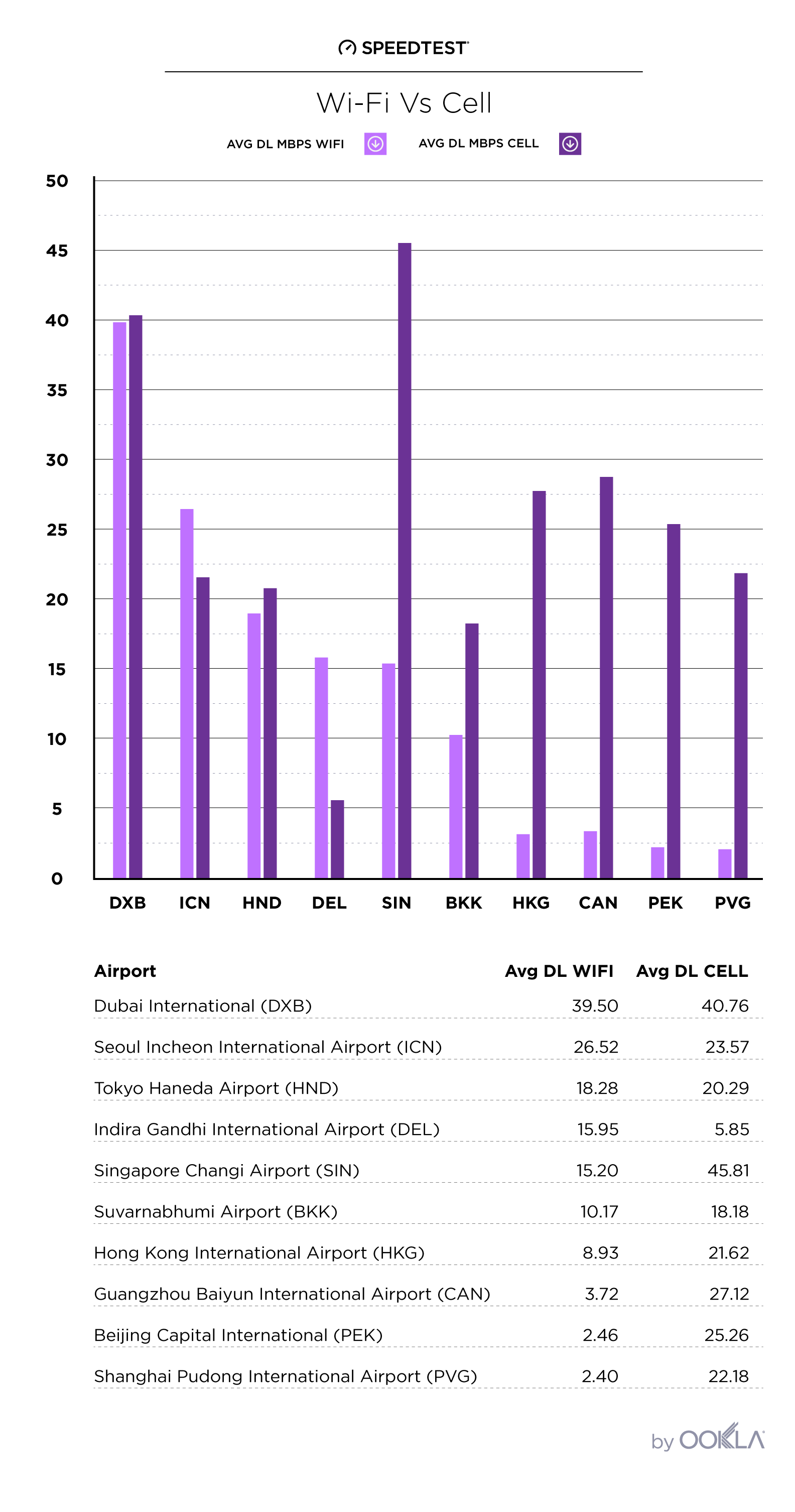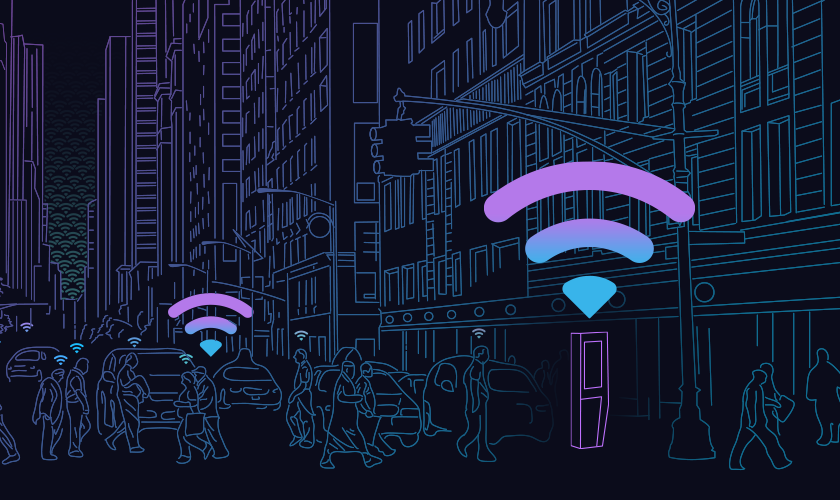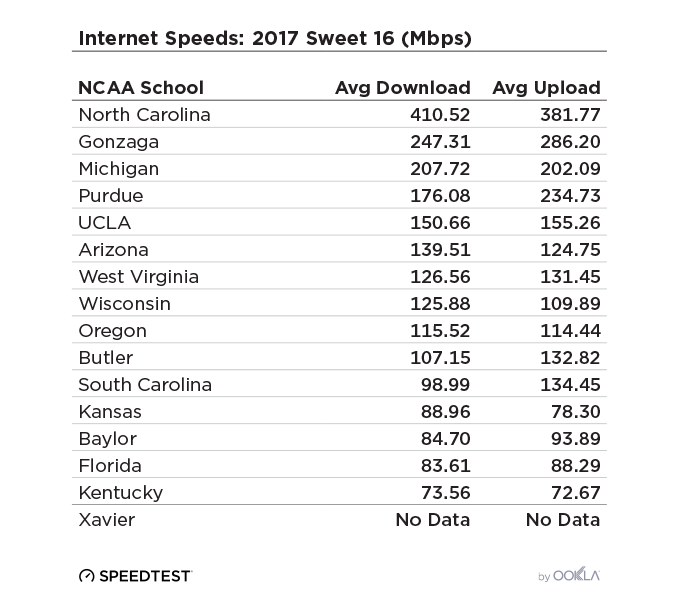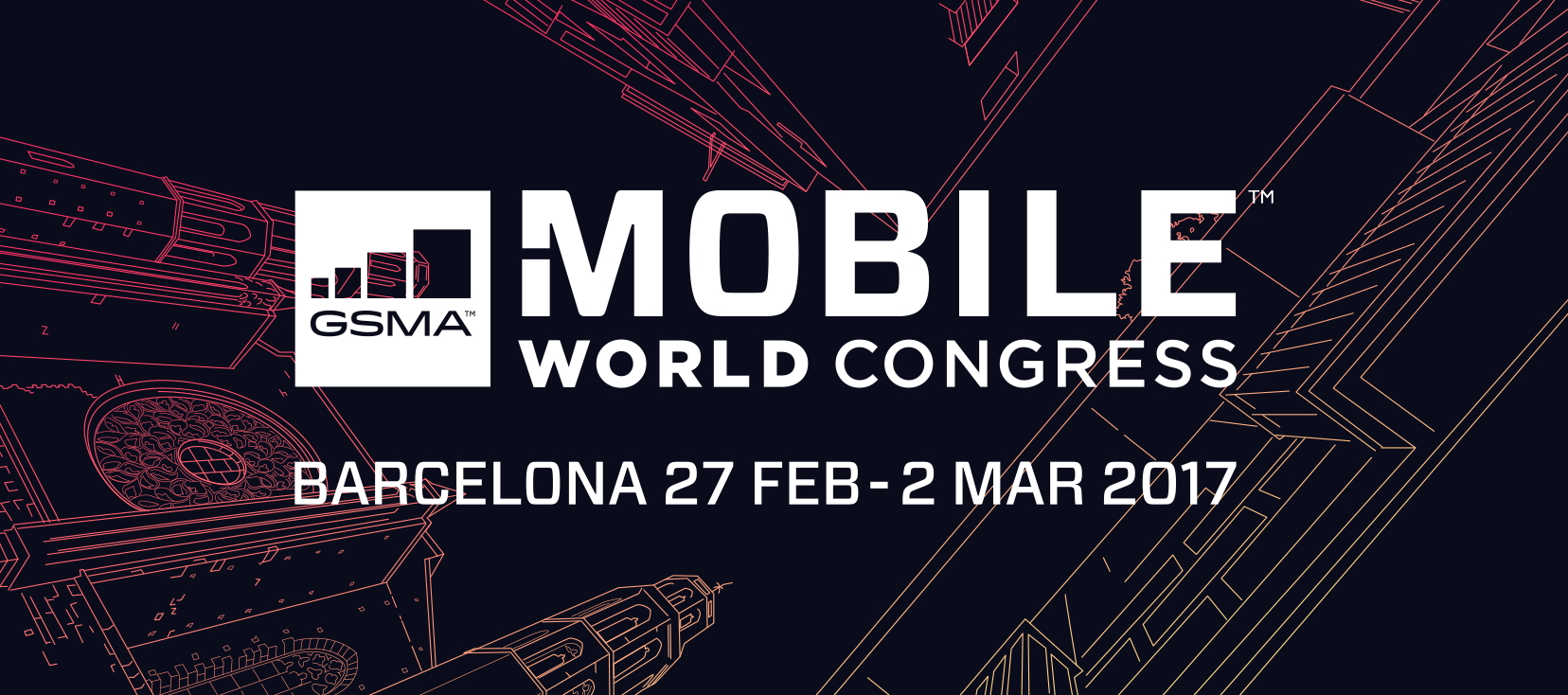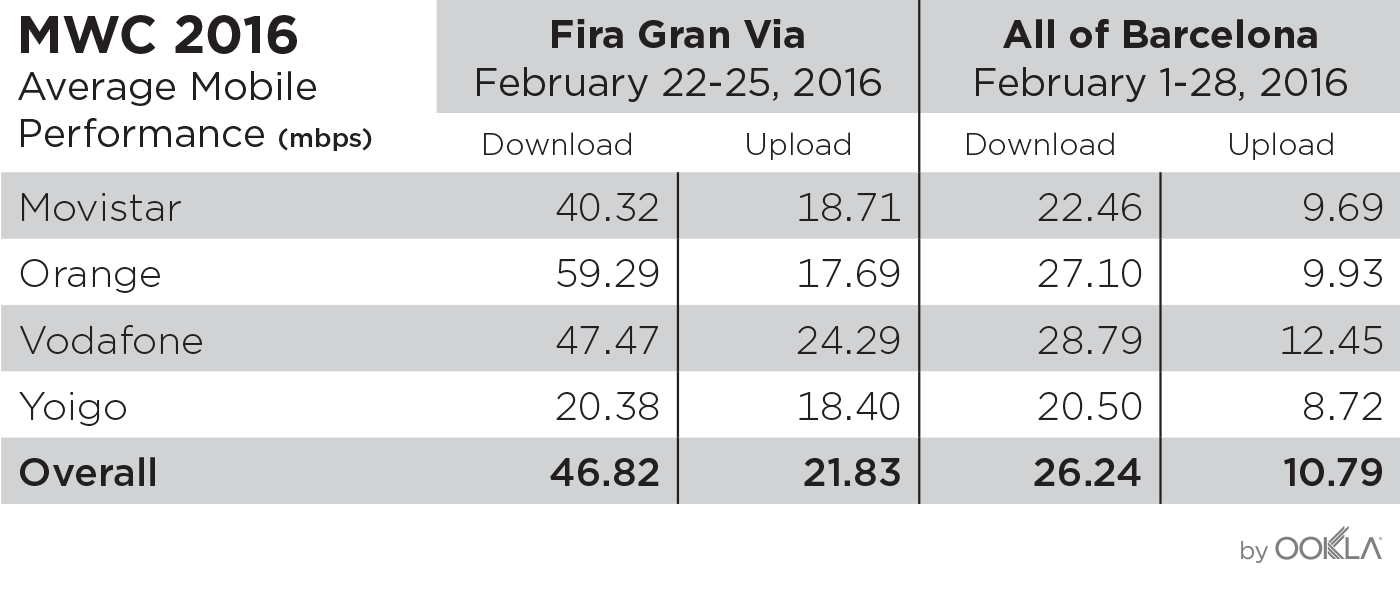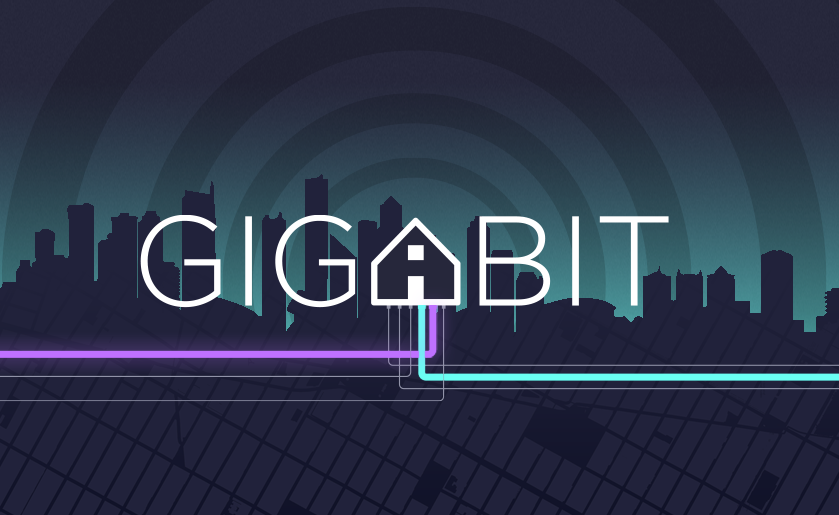

The future of the internet is fast. Fourteen times faster than the 70 Mbps the US averaged for download speed in March, gigabit-speed fixed broadband is still rare, but it’s making appearances in locations over the globe. Before you get too attached to the idea of downloading 1 billion bits of data per second, know that getting gigabit service and adjusting your set-up to achieve top speeds is harder than you might think.
We’re here to offer a few tips to help you achieve the Speedtest results you dream of. Some of these will help you maximize your potential internet speeds even if gigabit is not available in your area.
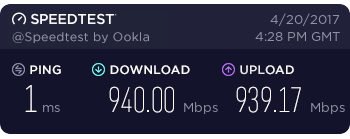
Factors you can’t control
1. Is gigabit-level service available in your area?
While internet service providers (ISPs), municipalities and companies like Google have been making headlines with gigabit (the ability to download 1 billion bits of information in one second), service is still rare (and expensive).
Ask around to see if gigabit is available in your area. Google Fiber is one option in some cities. Also check with phone companies and smaller ISPs to see if they offer gigabit. Some forward-thinking governments in places like Longmont, CO; Grant County, WA and New Westminster, BC have even created their own fiber networks.
2. What kind of infrastructure is your service delivered over?
You’ll get the best speeds with fiber because you won’t have to deal with the noise or interference that occurs over copper lines. However, new coaxial technologies, namely DOCSIS 3.1, have the potential to provide gigabit speeds, but not symmetrically (see the next point). Finally, phone lines, used for DSL, absolutely won’t cut it at all.
Having fiber doesn’t mean you’ll automatically have gigabit; the service still needs to be available in your area and you’ll likely pay more for it.

3. Is the available service plan symmetrical?
That is, are the advertised download and upload speeds the same? This varies by ISP, but asymmetrical service is more likely over coaxial connections — symmetrical gigabit service requires the robustness of a fiber optic connection. Asymmetrical service can lead to bufferbloat.
4. Understand the network located upstream of you.
And the quality of that network matters. If your ISP’s central office doesn’t have the bandwidth to support all the gigabit connections in your area, everyone will see slower speeds during peak usage times.
This also applies to peer-to-peer connections. If you’re downloading games and/or streaming movies, your performance is impacted by both the quality of the network those applications are using and how fast those services allow content to be downloaded. Gigabit is great for ensuring that multiple users are having a consistent internet experience, but don’t expect to be downloading games from Steam at gigabit speeds.
5. Data overhead makes 1 Gbps a theoretical number.
Though perfect circumstances might allow you to send 1 billion bits of information per second, some of those bits are overhead (including preamble, inter-frame gaps and TCP) and your actual data throughput will be a little smaller. If there was no overhead, you might be able to achieve a Speedtest result of 997 Mbps, but you’re more likely to top out at 940 Mbps. For more details on the math, read this.
What you can control
6. Good quality wiring is essential.
To achieve the fastest speeds possible, the most important thing you can do is use Cat 6 ethernet wiring to connect your devices to your modem and/or router. Cat 5e can do it but you’ll get less crosstalk using Cat 6. Plus, if you’re going to spend the money on new cables, it’s worth future-proofing your investment. Cat 5e supports up to up to 1,000 Mbps while Cat 6 supports ten times that. Also don’t run your data cabling parallel to power lines — interference from the power lines can cause interference in the ethernet cabling.
7. Are both the ports and the CPU in your router gigabit-ready?
Read the fine print when choosing a router. Not every consumer-grade router can support gigabit speeds over the ports in the back. And sometimes the ports support gigabit but the router’s CPU can’t keep up. In general, x86 processors are fastest, followed by ARM and then MIPS. You still need to check this even if your router was provided by your ISP.
Typically you’ll find that recently-released and the more expensive consumer grade routers are up to the task. Here are two routers we recommend along with affiliate links to make your shopping easy:
- Ubiquiti Edgerouter. The super advanced user will enjoy the pared-down customizability of this router. Many of the Ooklers use some version of this router. It doesn’t have Wi-Fi built in so be sure to get one or more compatible access points.
- Velop Whole Home Wire Mesh. To set up your entire house at once, try this system. It comes pre-loaded with Speedtest so you can easily test your connection.
8. Use a hardwired connection.
While Wi-Fi technology is catching up, you’ll still likely see better speeds if you plug that Cat 6 ethernet cable directly into your computer.
9. Check your adapter.
Not all laptops have ethernet ports, so you’ll need an adapter for a hardwired connection. Make sure the adapter you’re using is gigabit capable. Thunderbolt and USB 3.0 adapters are usually good, but the performance of other adapters varies widely. And don’t forget, USB based adapters also add data overhead.
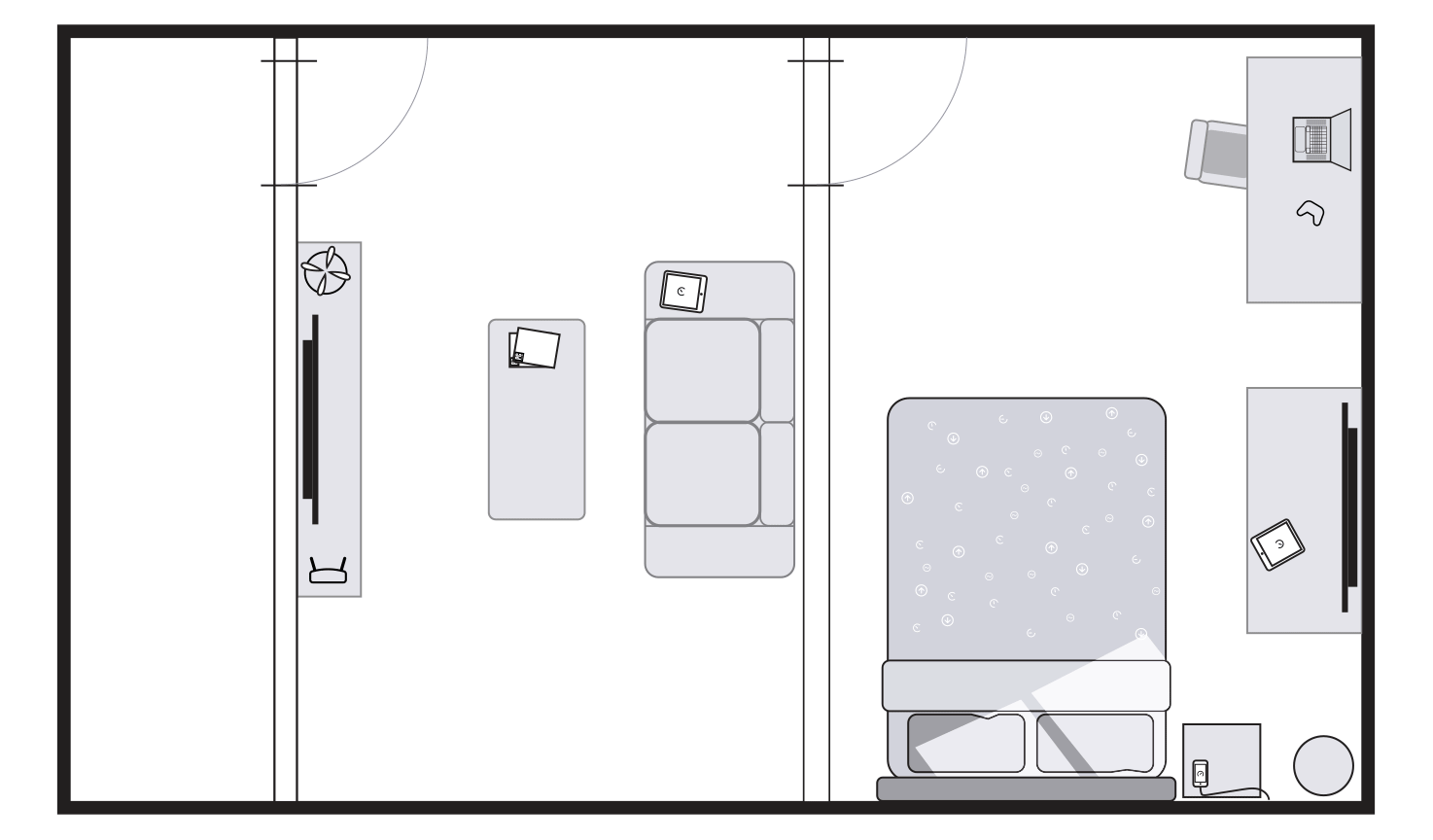
10. If you must use Wi-Fi, pick a clear channel and sit close to your router.
All kinds of things can interfere with your Wi-Fi signal and thereby slow down your connection: fluorescent bulbs, baby monitors or even a cheap pair of wireless headphones. This is critical for Wi-Fi performance as only one device can use the channel at a time. In addition, Wi-FI uses CSMA-CA to handle collisions — if it detects a collision on the channel, the Wi-Fi device will halt sending and wait until the channel is clear. Interference counts as collisions, so you will end up with a sporadic and halting connection with interference nearby.
If your connection is clear, attenuation (signal drop over distance) is a very real problem when using Wi-Fi. The 2.4 GHz band handles attenuation better but is more subject to interference. The 5GHz band is less subject to interference but has more issues with attenuation. Either way, you’re still likely only to achieve speeds topping out around 600 Mbps.
If you are on the 2.4 GHz band, make sure to chose from channels 1, 6, or 11 (or 14 if allowed by your country) — those are the only non-colliding channels at 20 MHz. At 40 MHz, you will pretty well consume the entire 2.4 channel spectrum, thus, it will be even more at risk of interference. For an illustration, click here.
11. Make sure your computer is using the latest Wi-Fi standards.
The nonprofit Wi-Fi Alliance keeps a close eye on these standards. In 2016 they announced Wi-Fi CERTIFIED ac standards which include Multi-User Multi-Input Multi-Output (MU-MIMO), 160MHz channels, quad-streams and extended 5GHz channel support. These standards change as technology improves, so check to make sure you’re working with the latest certifications. And just because your router supports these standards doesn’t mean your laptop or wireless device does.
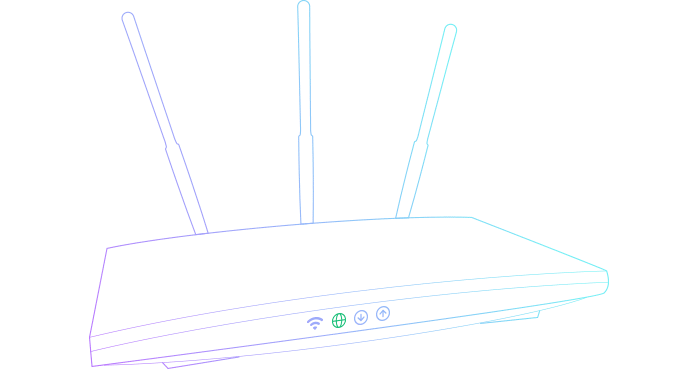
12. Decipher the hype behind the marketing.
For example, a wireless router that says it can support 4 gigs doesn’t necessarily mean it can support one 4 Gbps connection. It’s more likely that the device has four radios with 1 Gbps specified maximums (real world performance is likely to be slower).
13. Stay up to date on router firmware, but don’t update on day zero.
Vendors regularly release software updates for their routers to improve their stability, performance and security. It’s usually always the best option to stay up to date with these firmware patches. With that said, many of us Ooklaers wait anywhere from a week to a month to apply these patches (assuming they are not critical security updates) to make sure there are not any regressions or issues.
14. Use our desktop apps to run your Speedtest.
If you’re sure your setup is perfect but you’re still not seeing the Speedtest result you expect, download our free desktop apps for Windows or MacOS. Many lower performance systems can’t reach 1 Gbps via browser tests due to various limitations. Plus our desktop apps give you data on jitter and packet loss.
Advanced options: For the tech savviest
15. Is your network interface card (NIC) up to the task?
Just being rated for 1000-Base-T may not be enough. NICs that use software offload instead of hardware offload are often found in older, cheaper computers and struggle to support gigabit speeds. Intel offers some of the best driver and hardware support on their NICs.
16. Encryption can be slow if it’s not done right.
Temporal Key Integrity Protocol (TKIP) encryption, often enabled by default on Wi-Fi routers, will slow you doooowwwwn. Use Advanced Encryption Standard (AES) instead as it’s often hardware accelerated. The standard for WPA2 encryption, AES is both more secure and faster than TKIP. Some routers have TKIP options for compatibility reasons, though, even if you’re using WPA2, so check.
17. Turn off QoS shaping.
Quality of Service (QoS) shaping on a router can help you prevent large downloads from eating up all your bandwidth. But on consumer hardware, you’re also bypassing hardware acceleration so all your packets of data have to be inspected by the main CPU. This can cut your performance by 10x on a high bandwidth connection.
If you’ve gone this far and still want more, read how our lead systems engineer set up his non-gigabit connection to achieve super fast speeds
Is gigabit worth the trouble?
By now you’re probably thinking, “Getting the fastest internet speeds sure is a lot of work.” For some people hitting the maximum speed is worth any amount of work to get there. Others will be more than happy with the 300, 400 or 500 Mbps that they see on their gigabit plan with minimal tinkering.
Whether you’re gigabit ready or not, these tips will help you get the best speeds out of your internet connection now and in the future. Use this handy little list to keep track of all the steps:
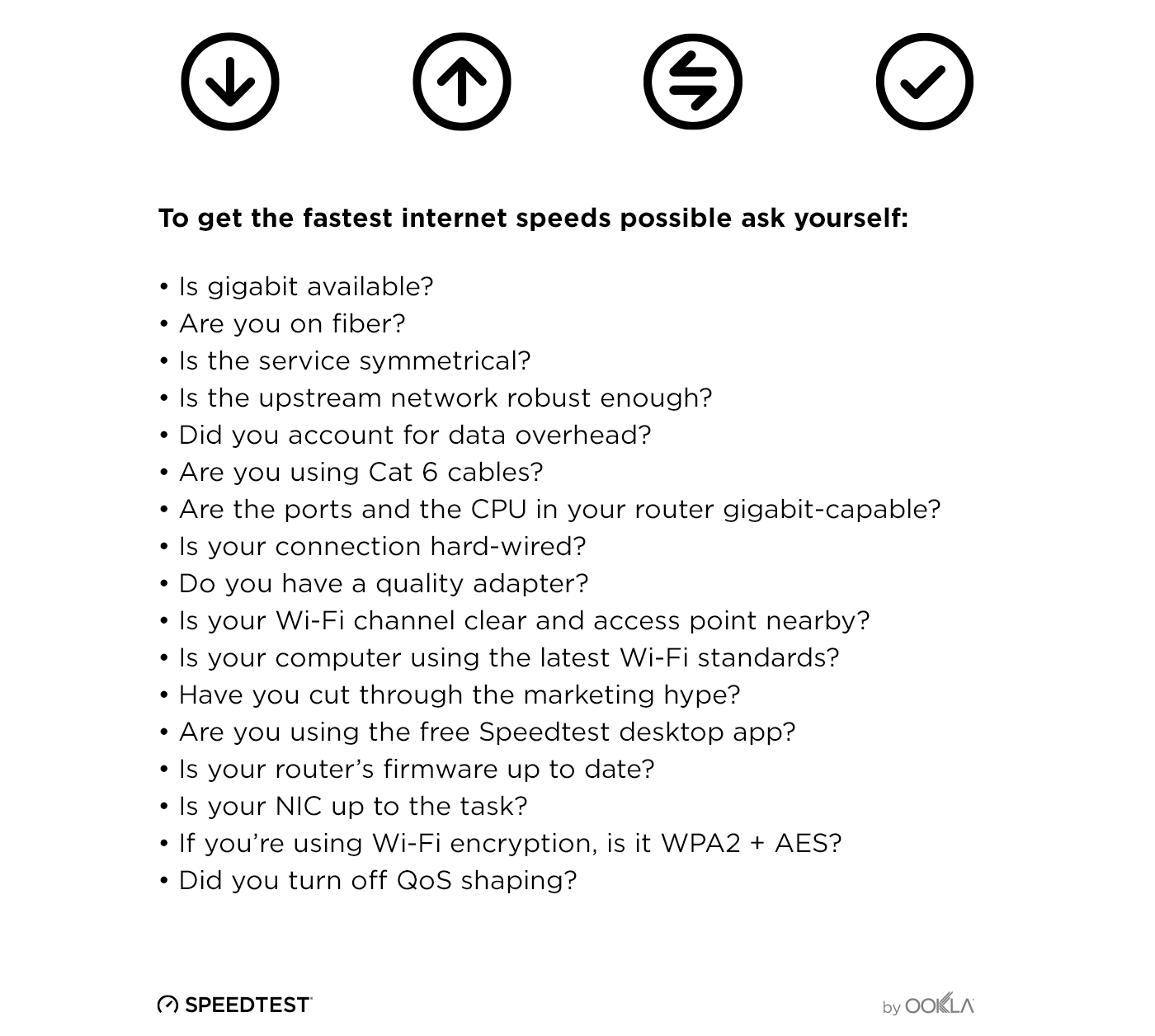
If you answered “yes” to all of the above questions, congratulations! You’re now ready to unlock that superfast Speedtest result.




